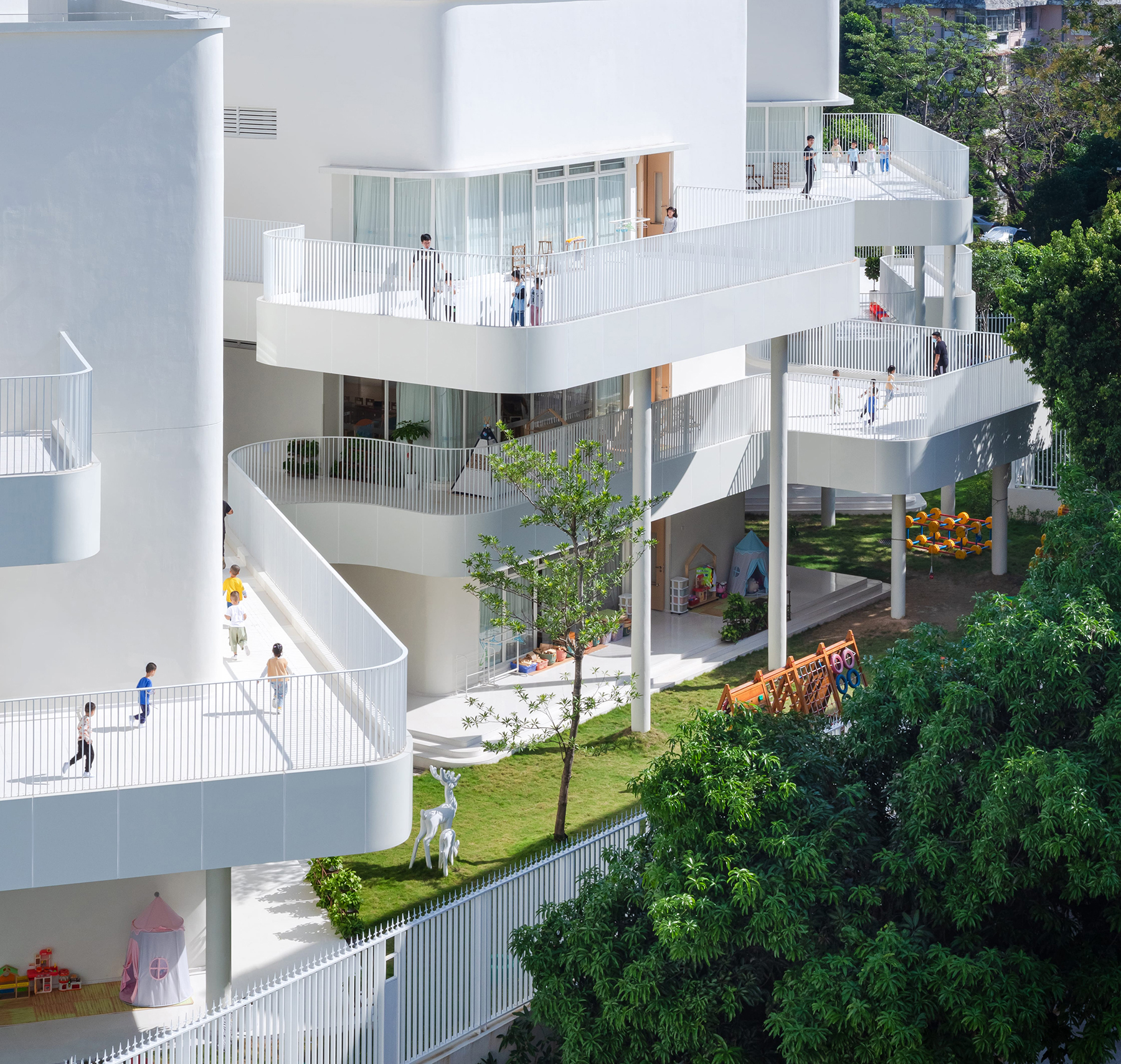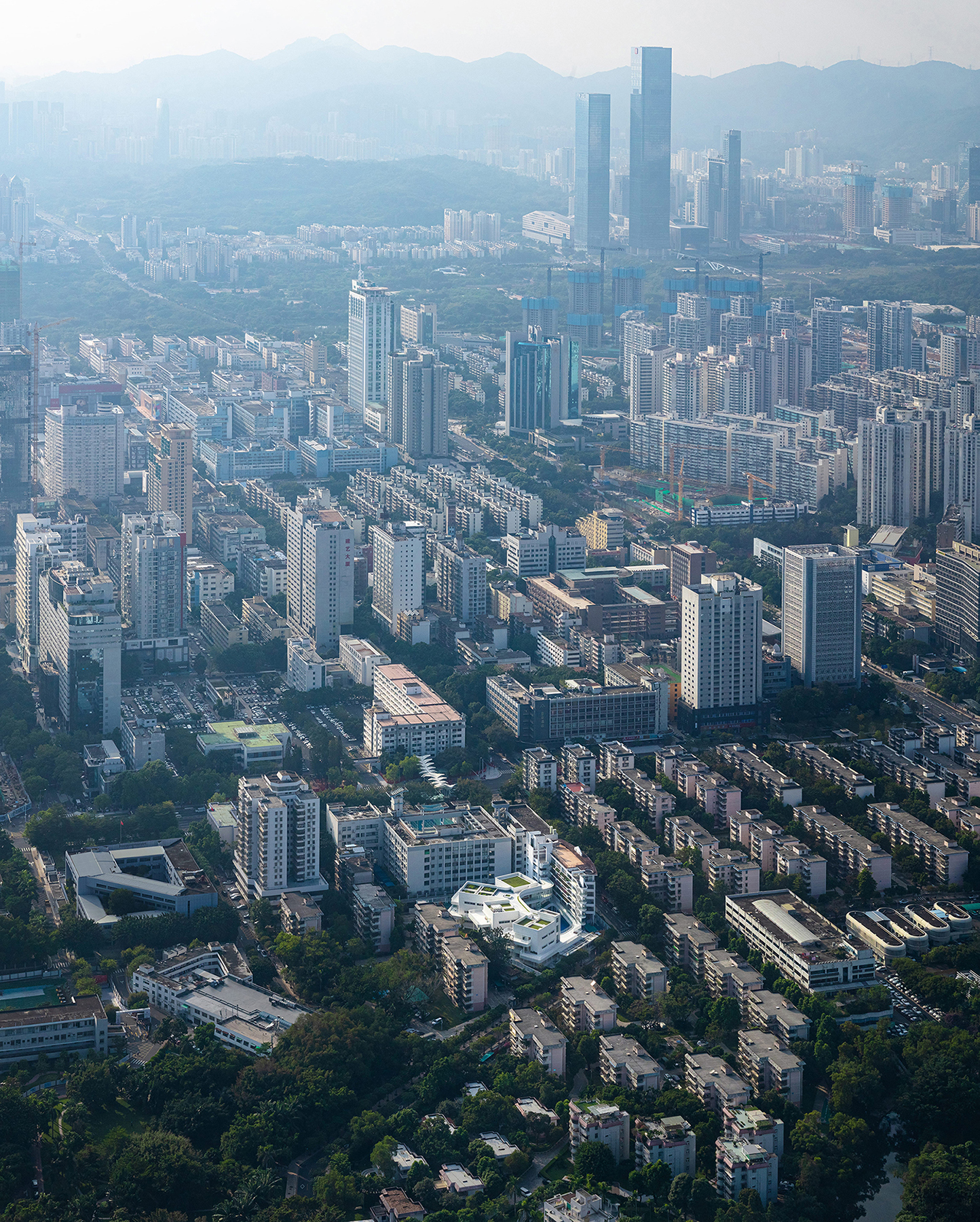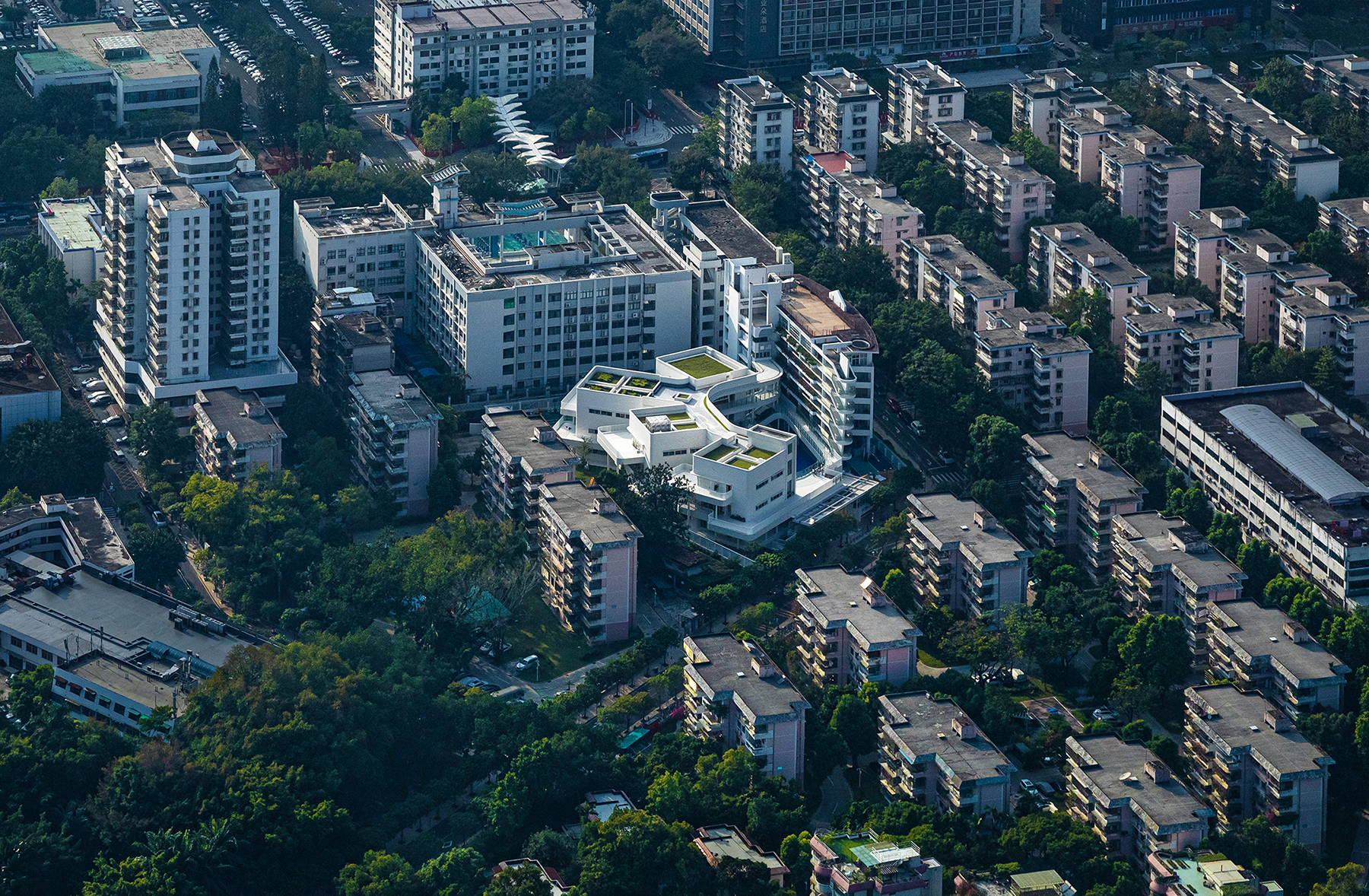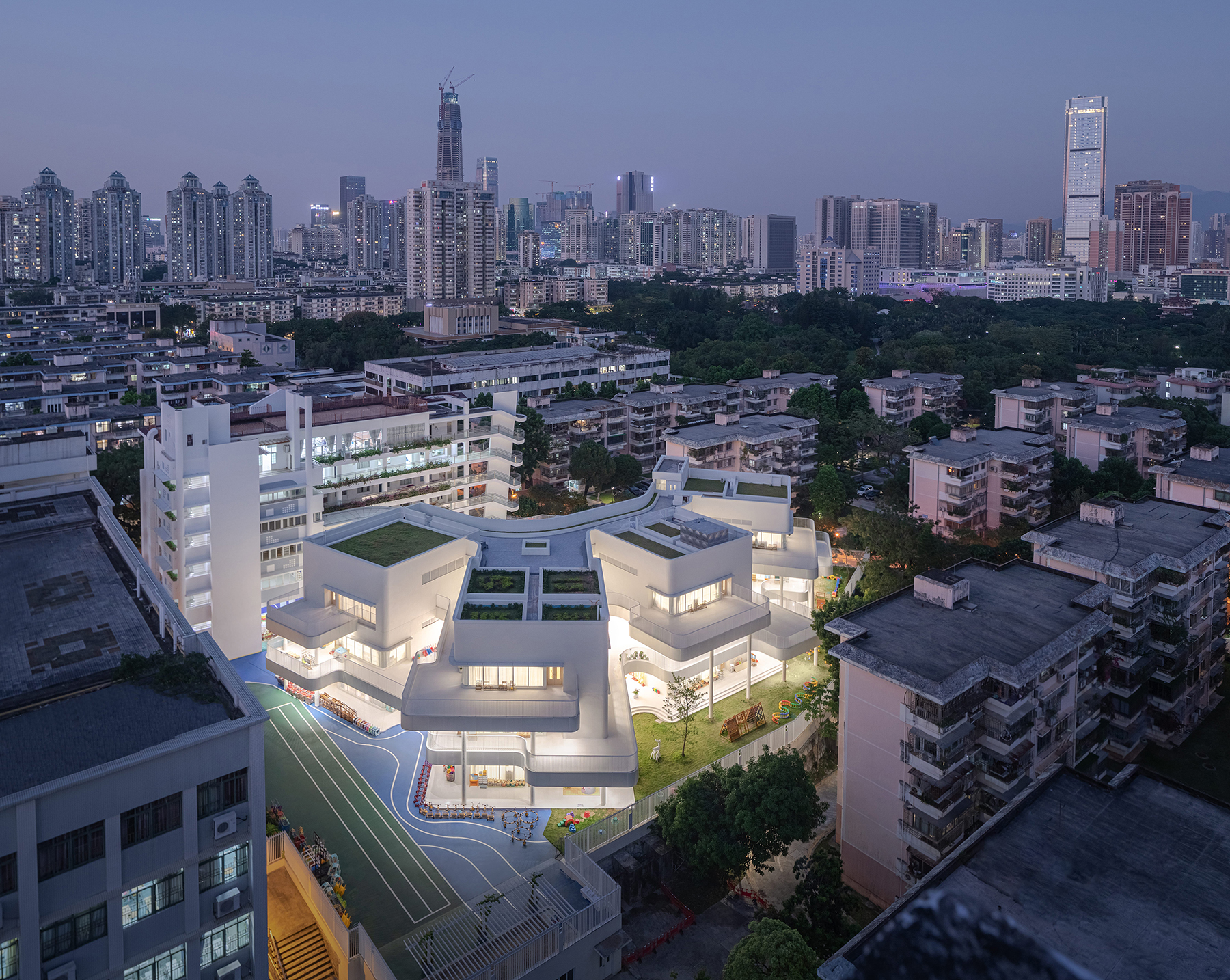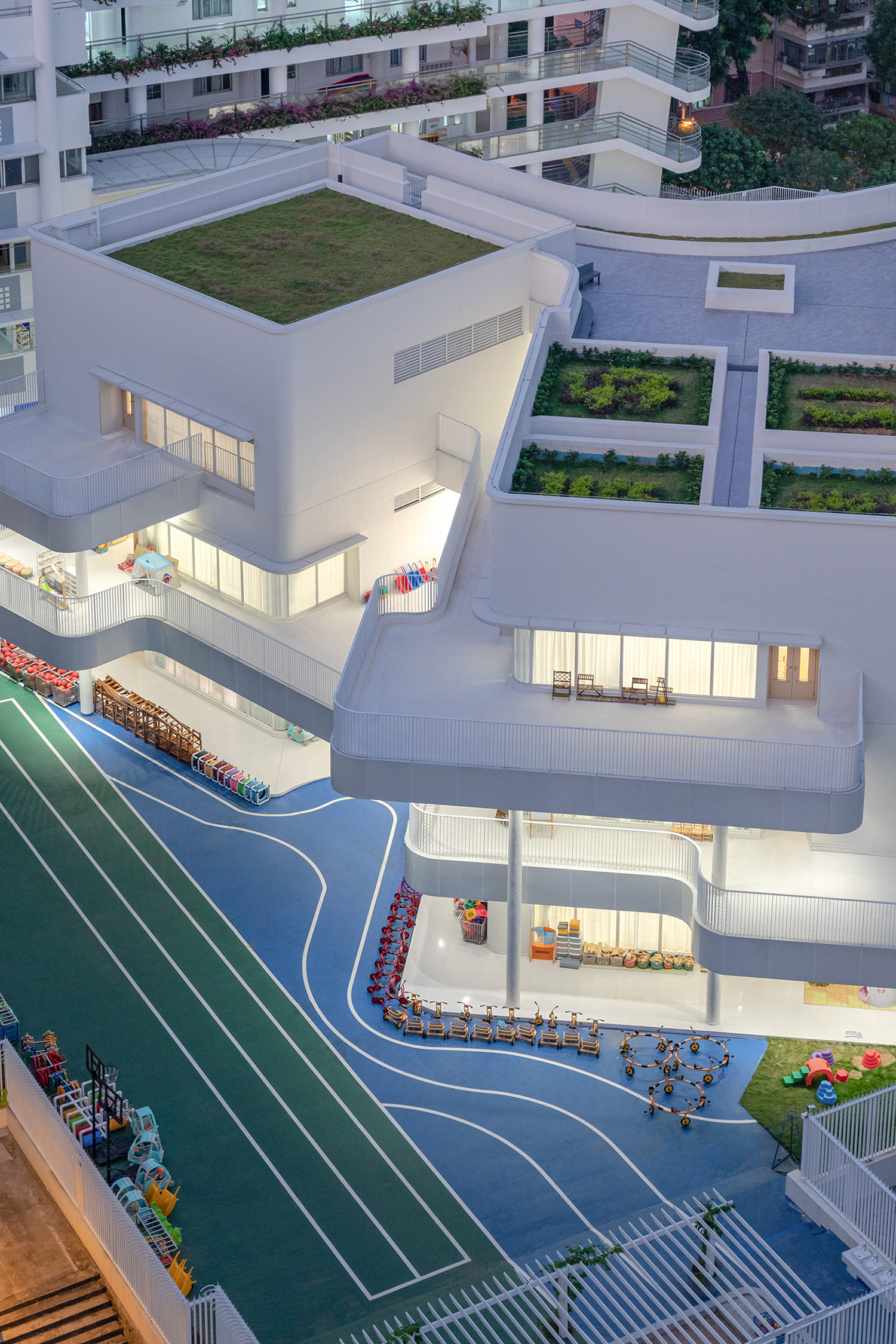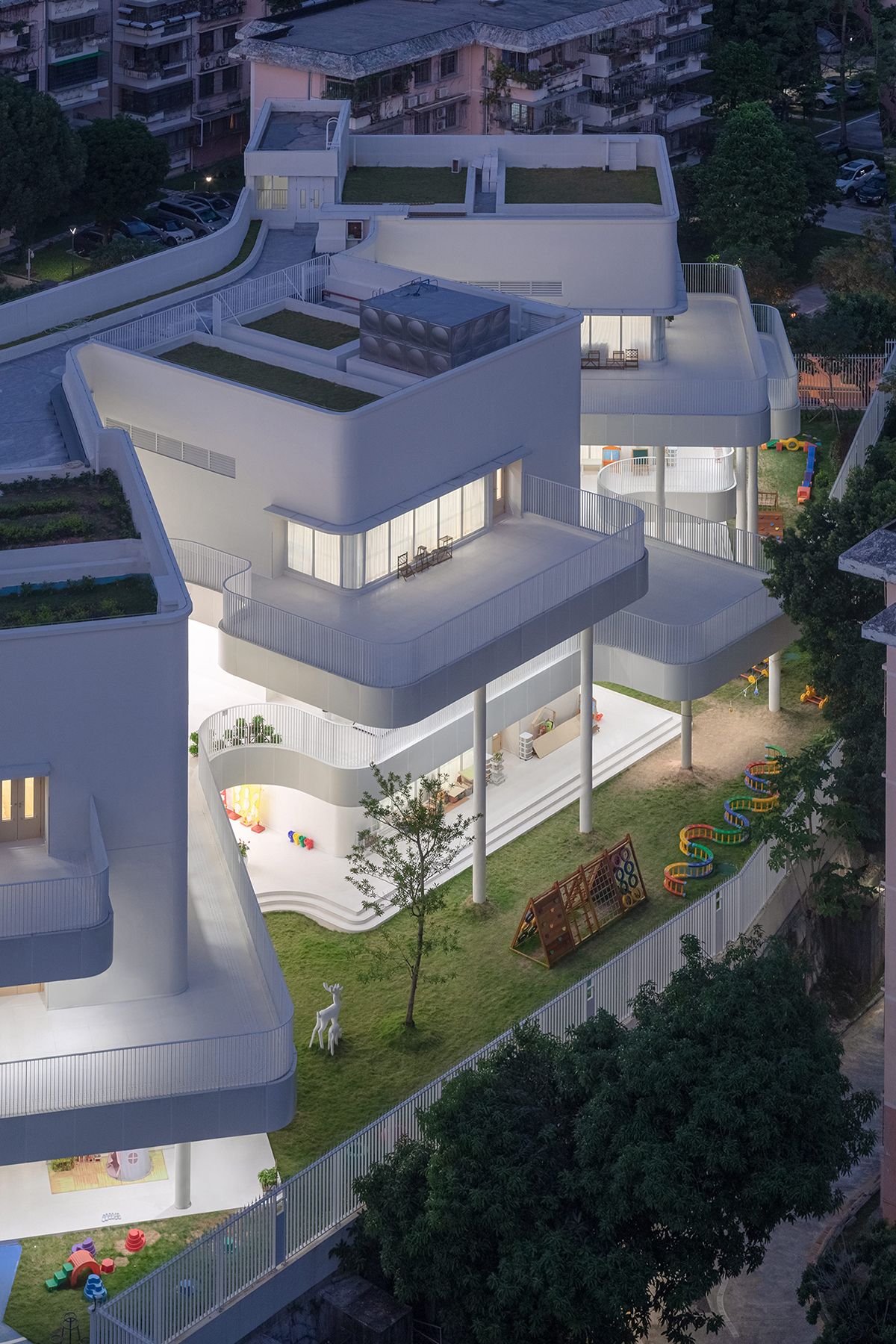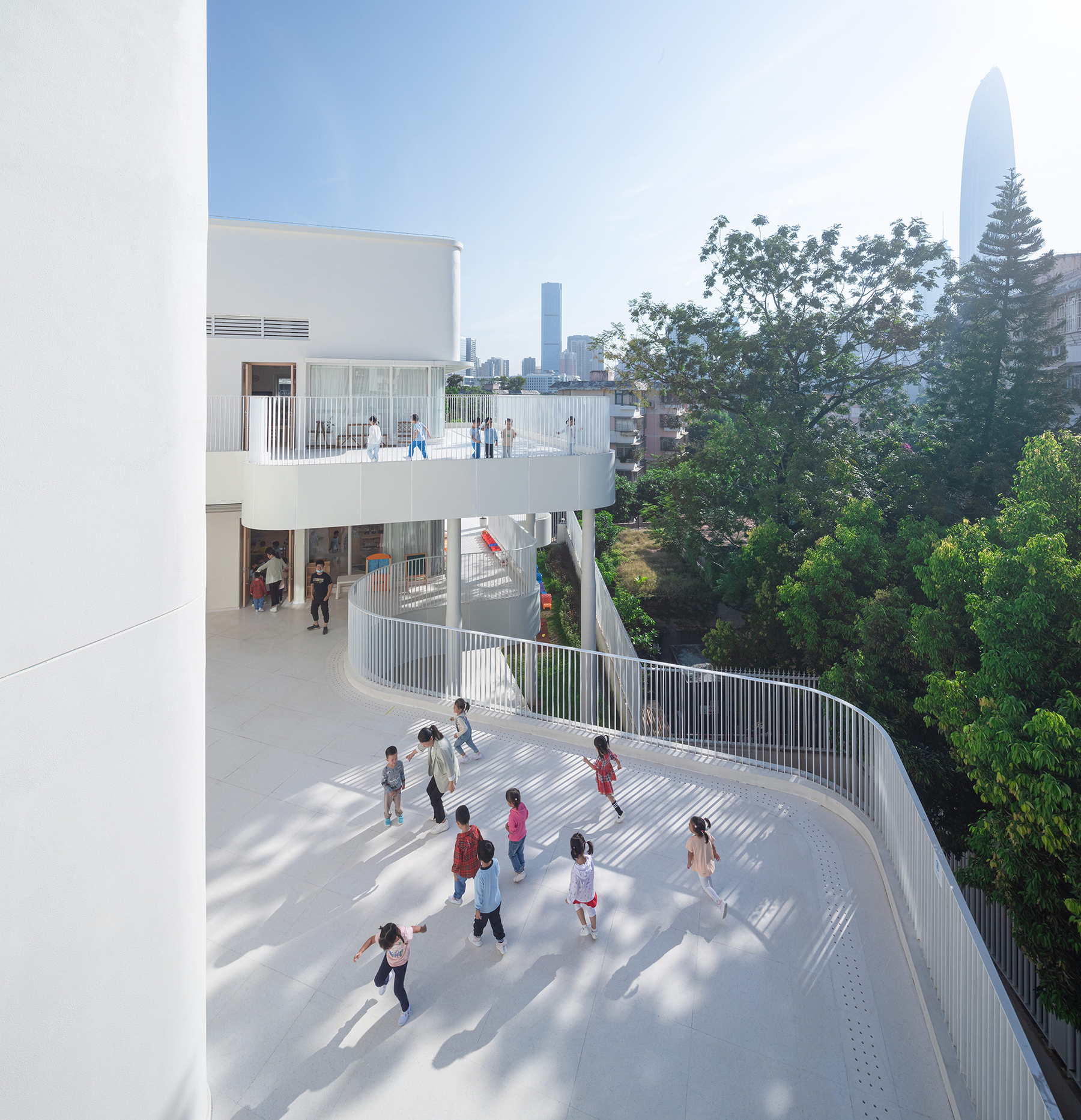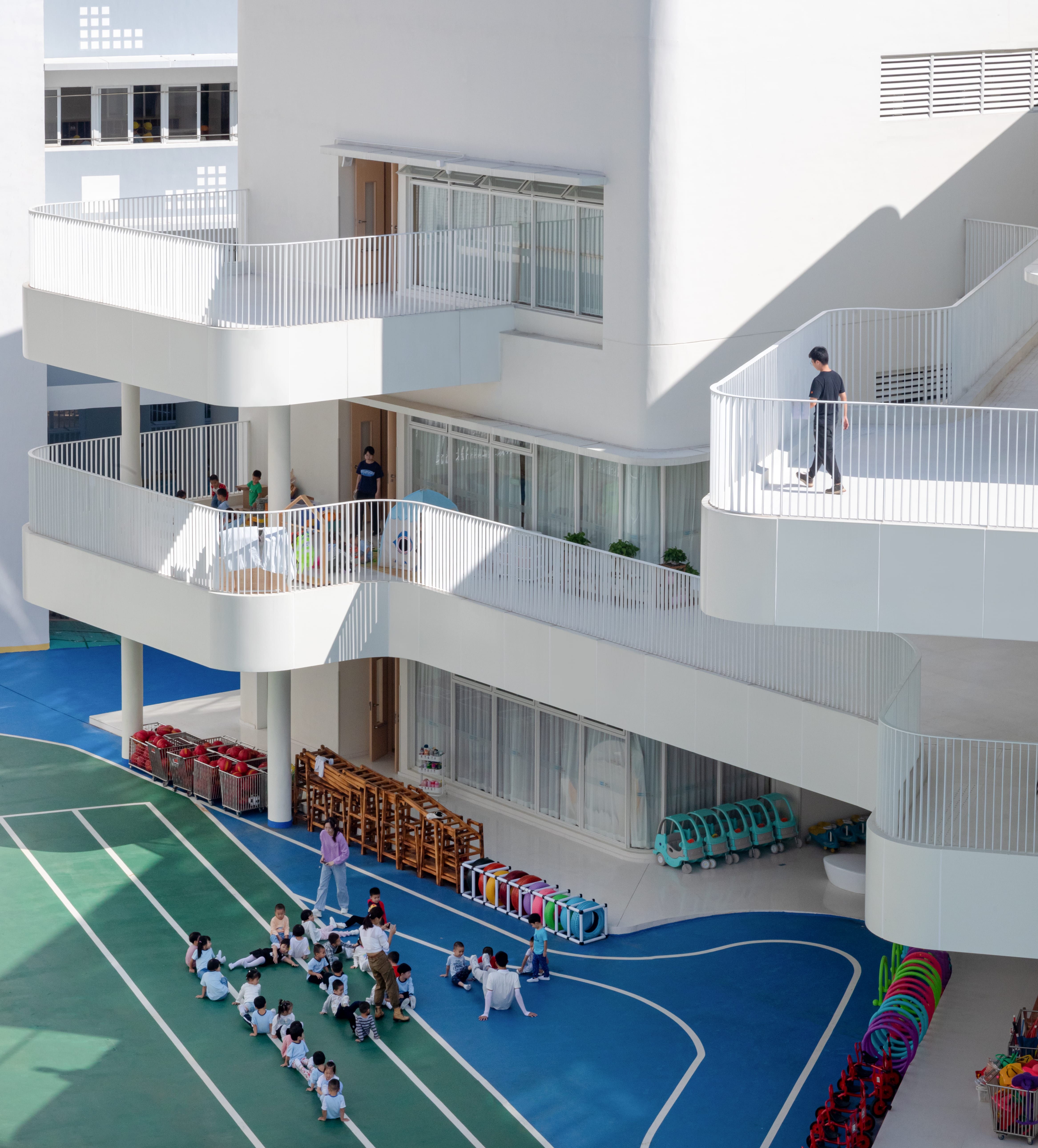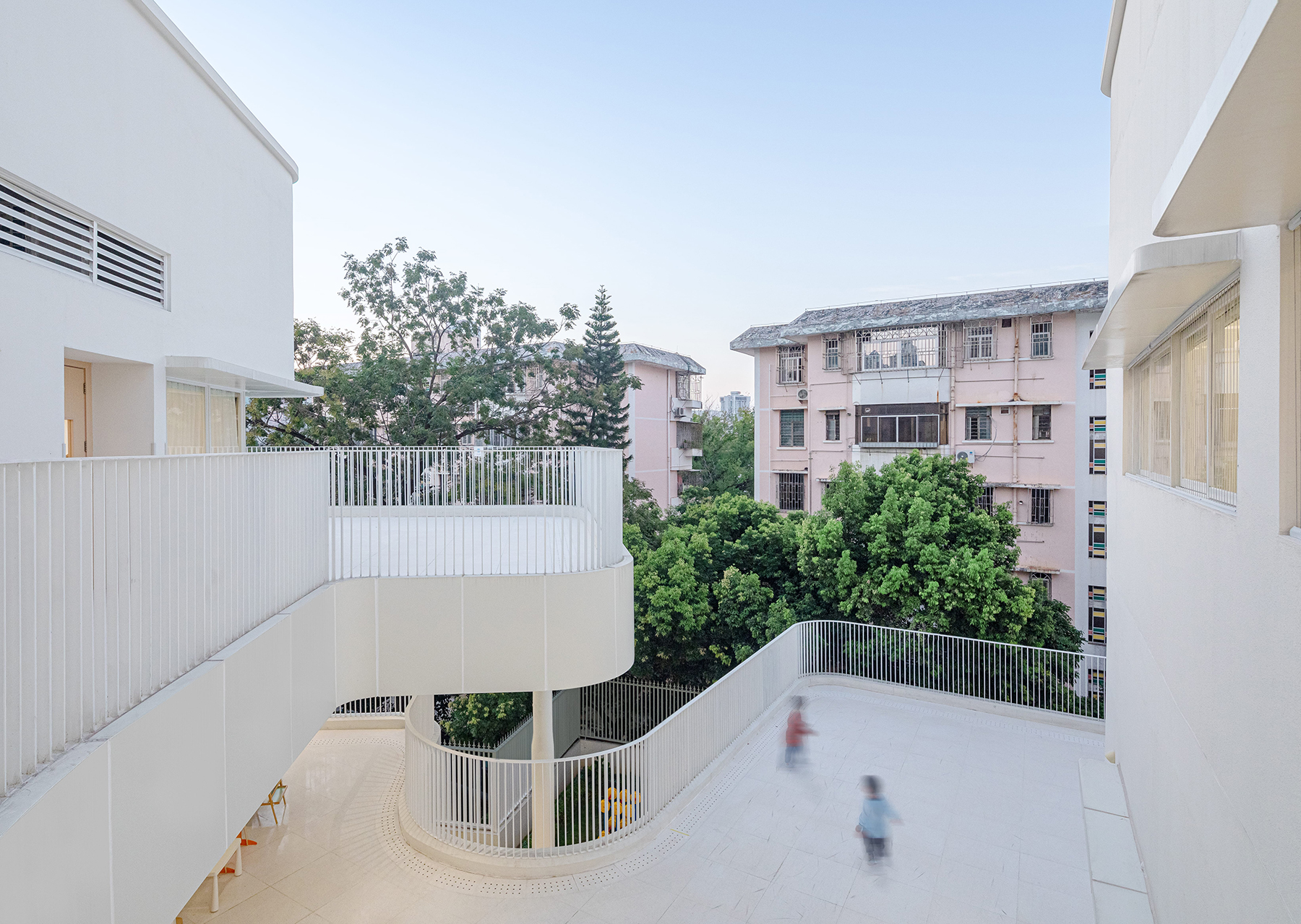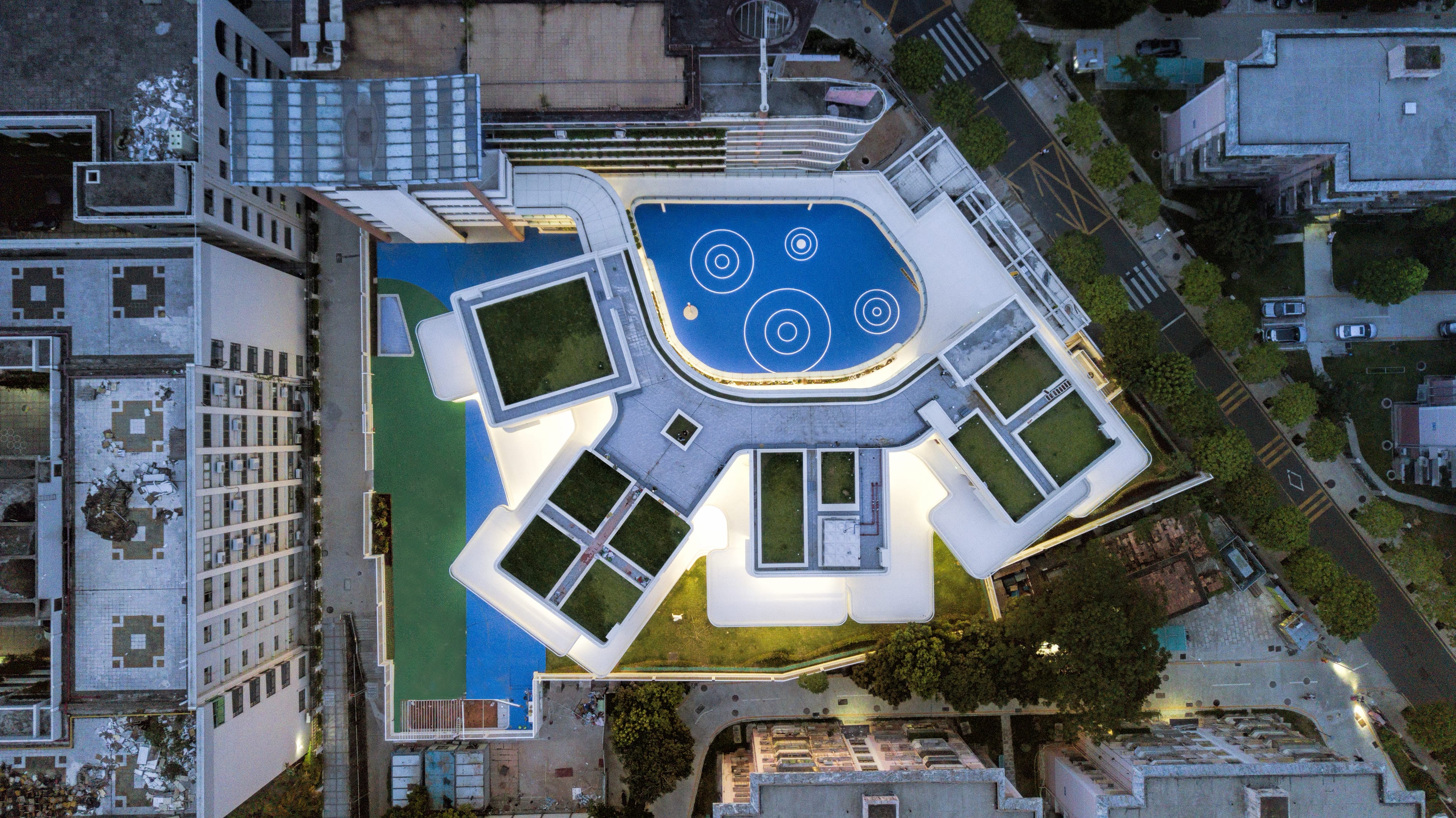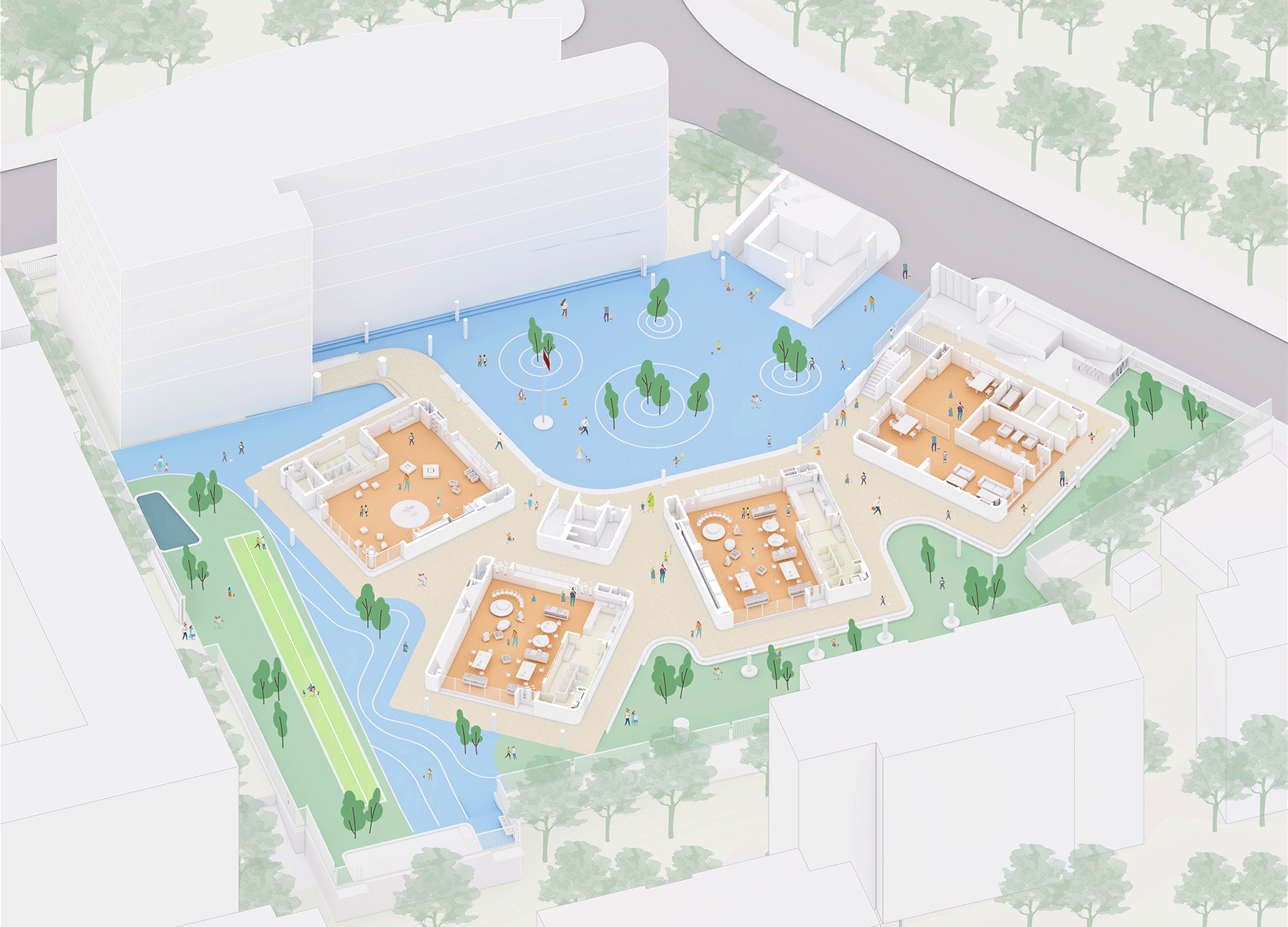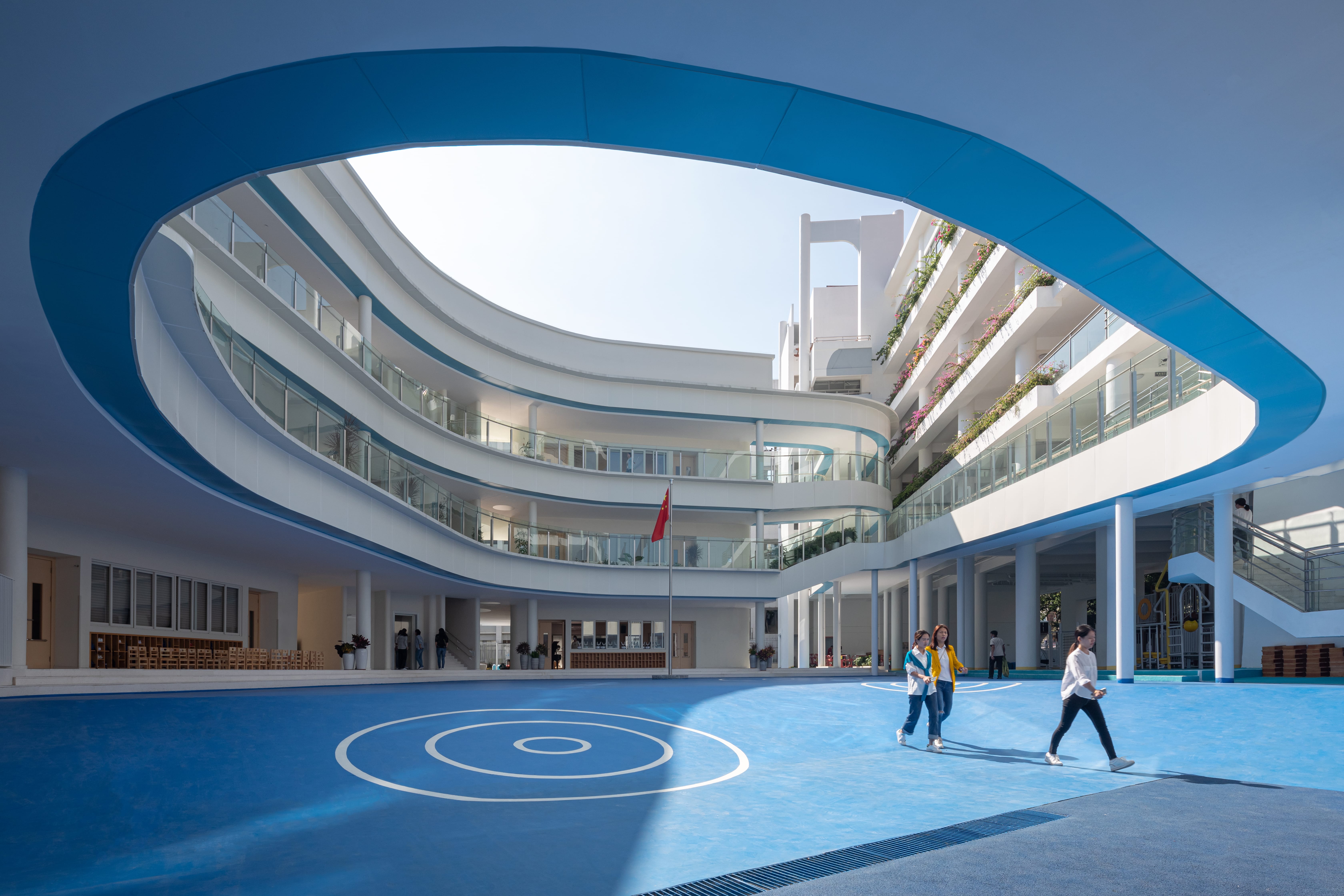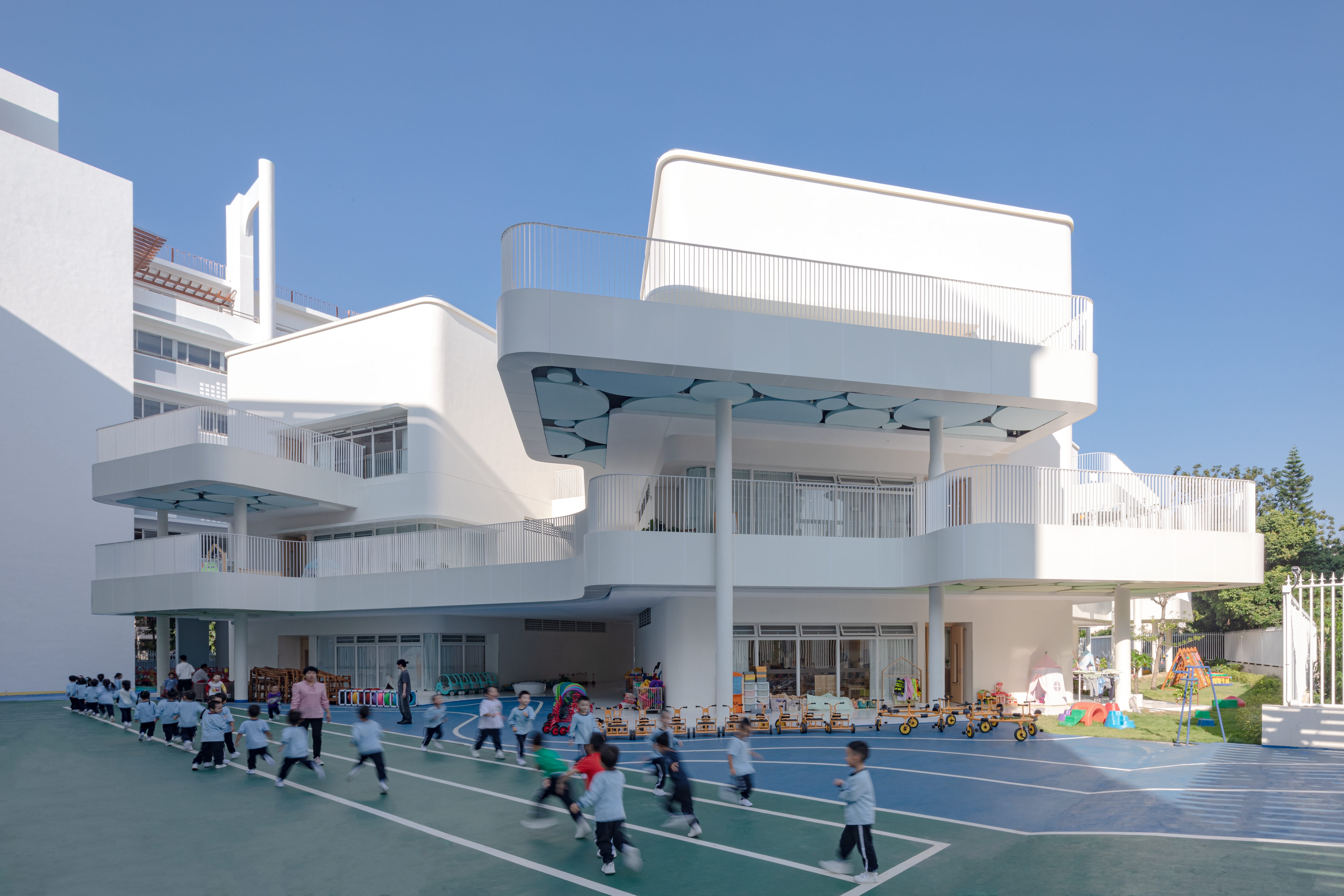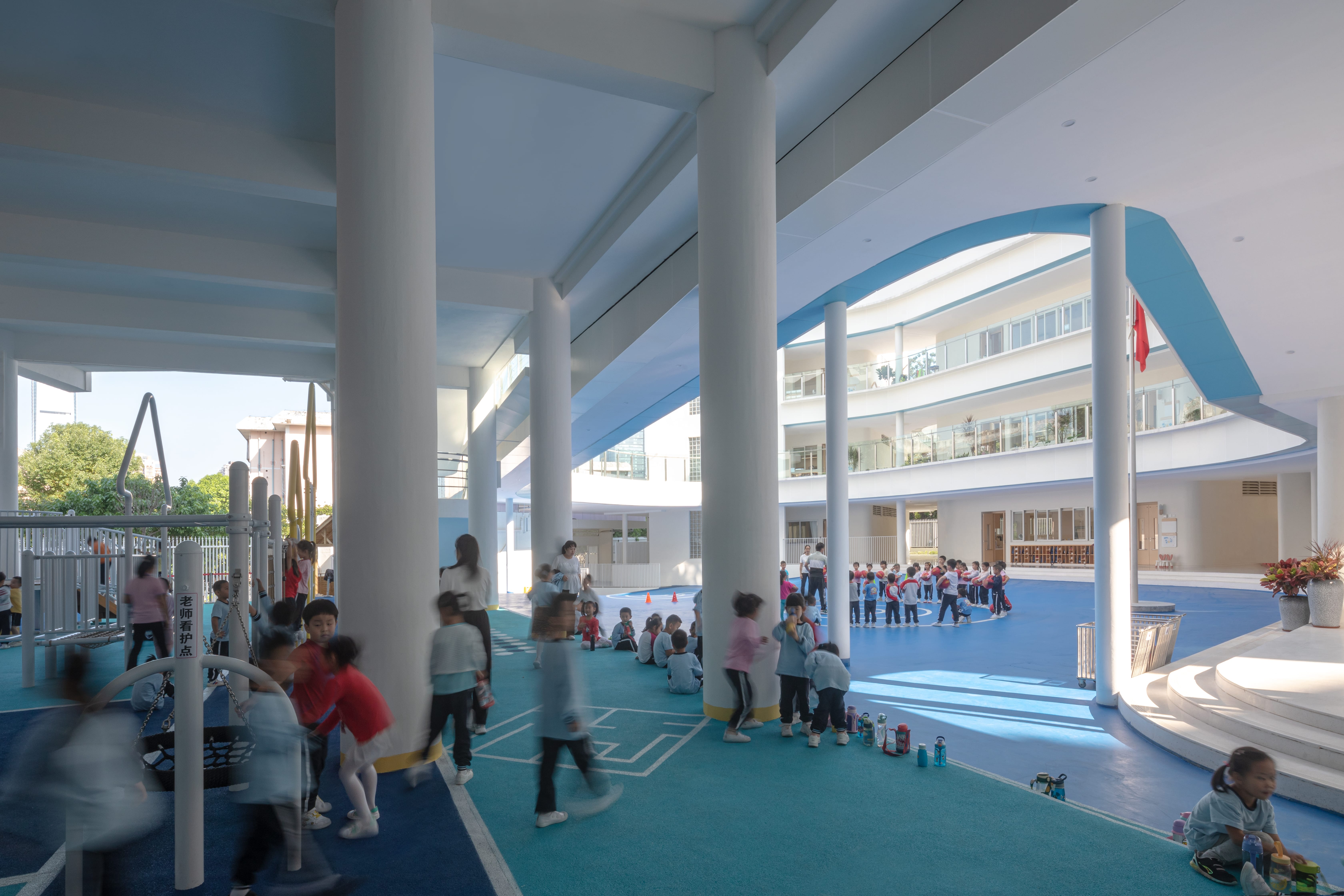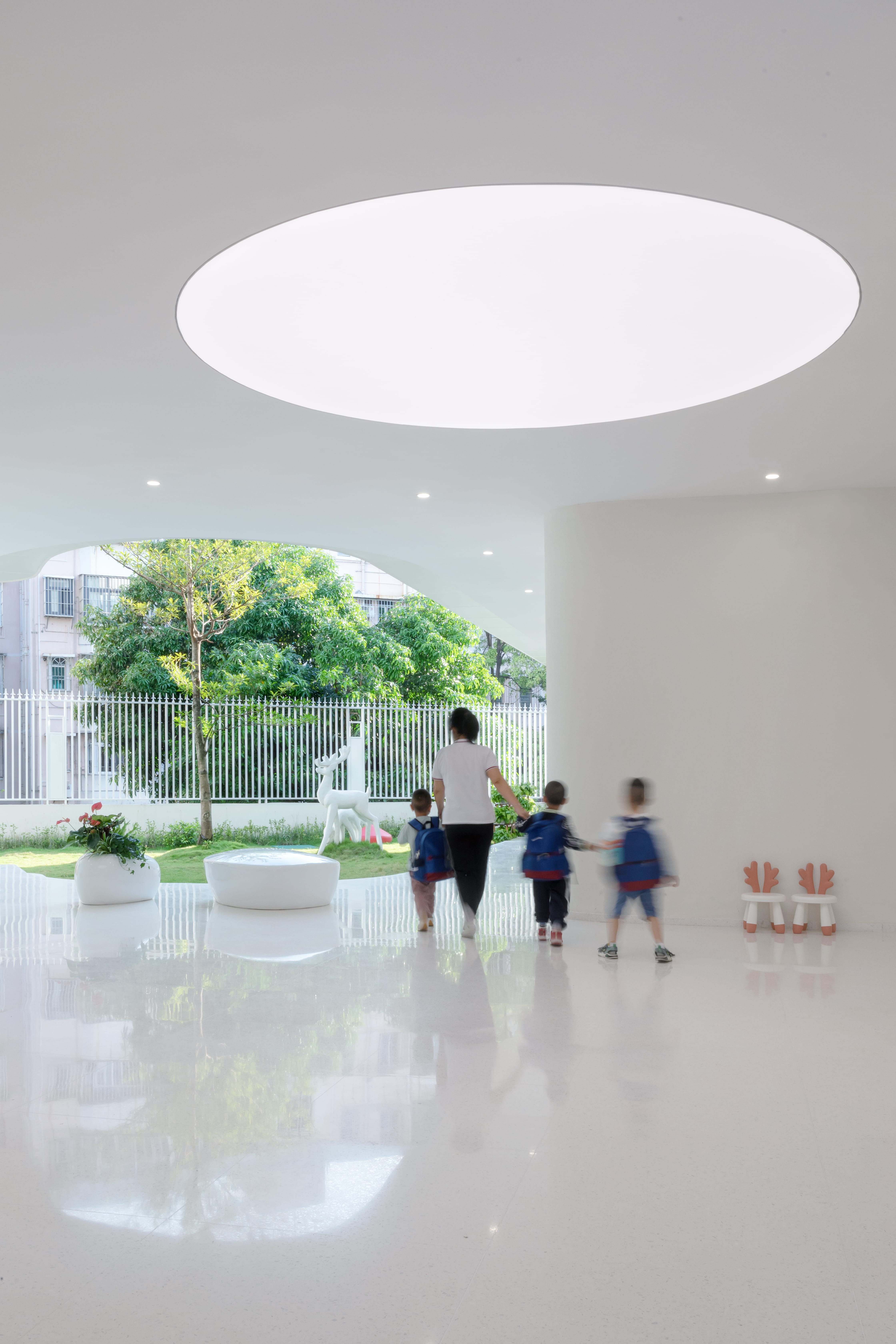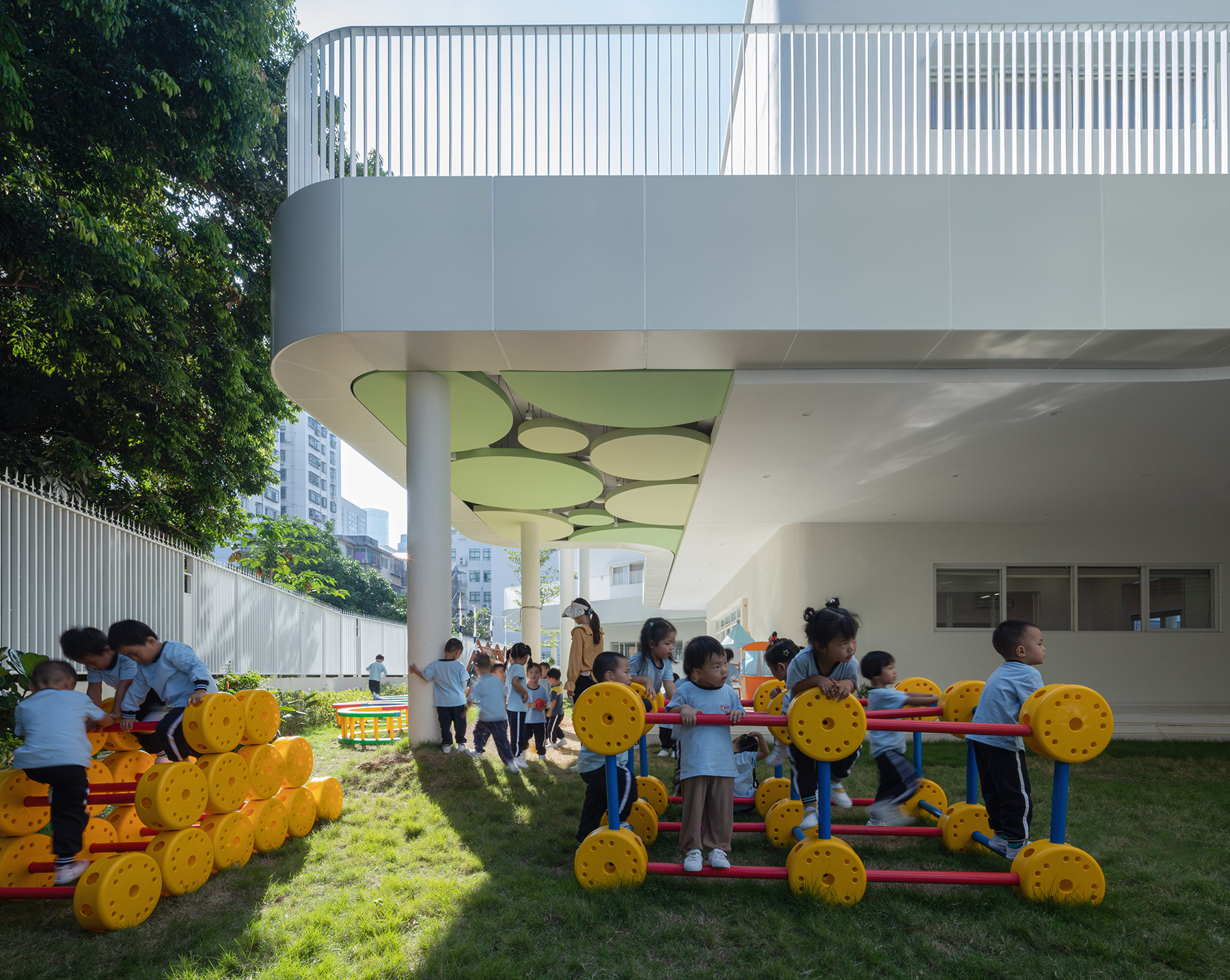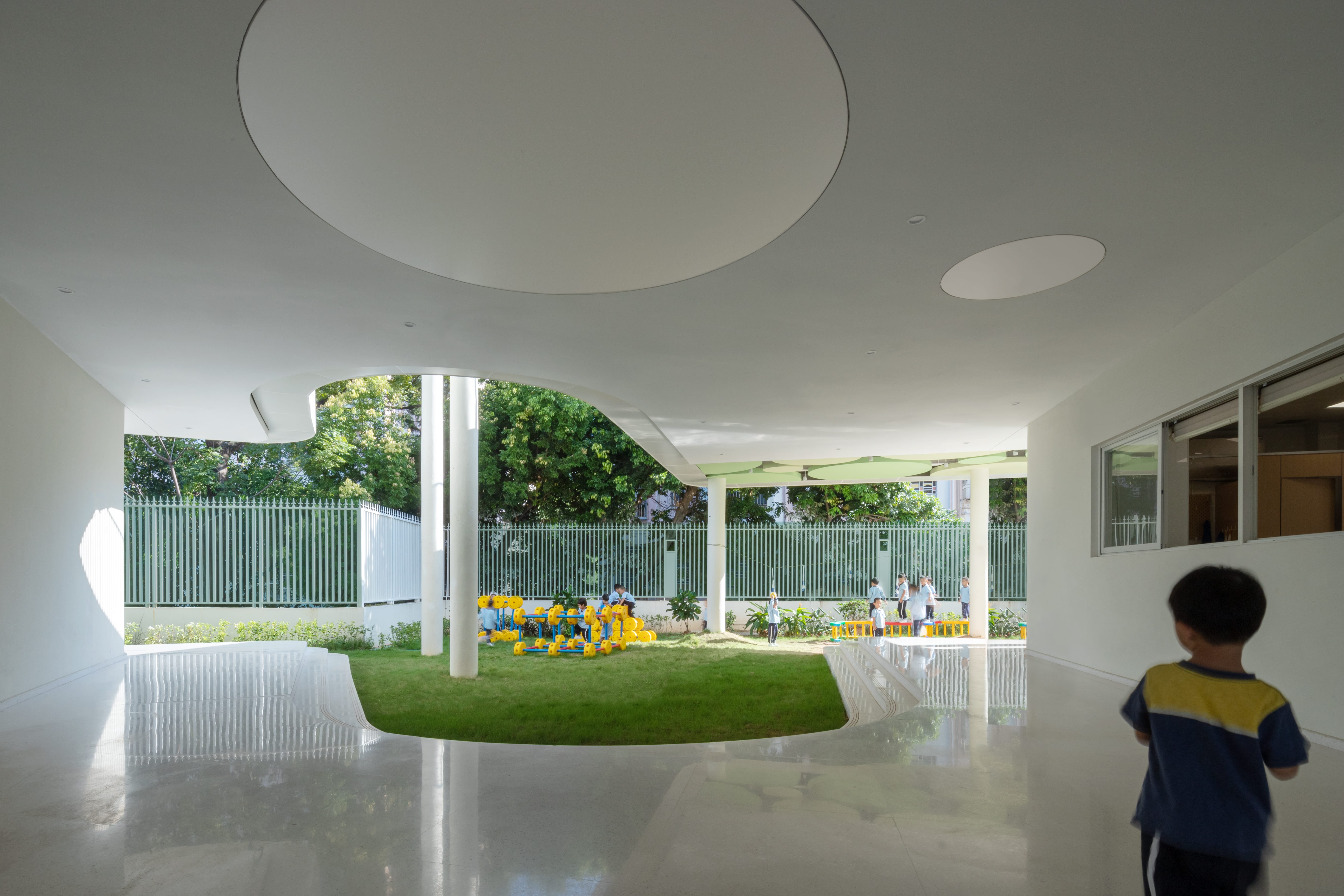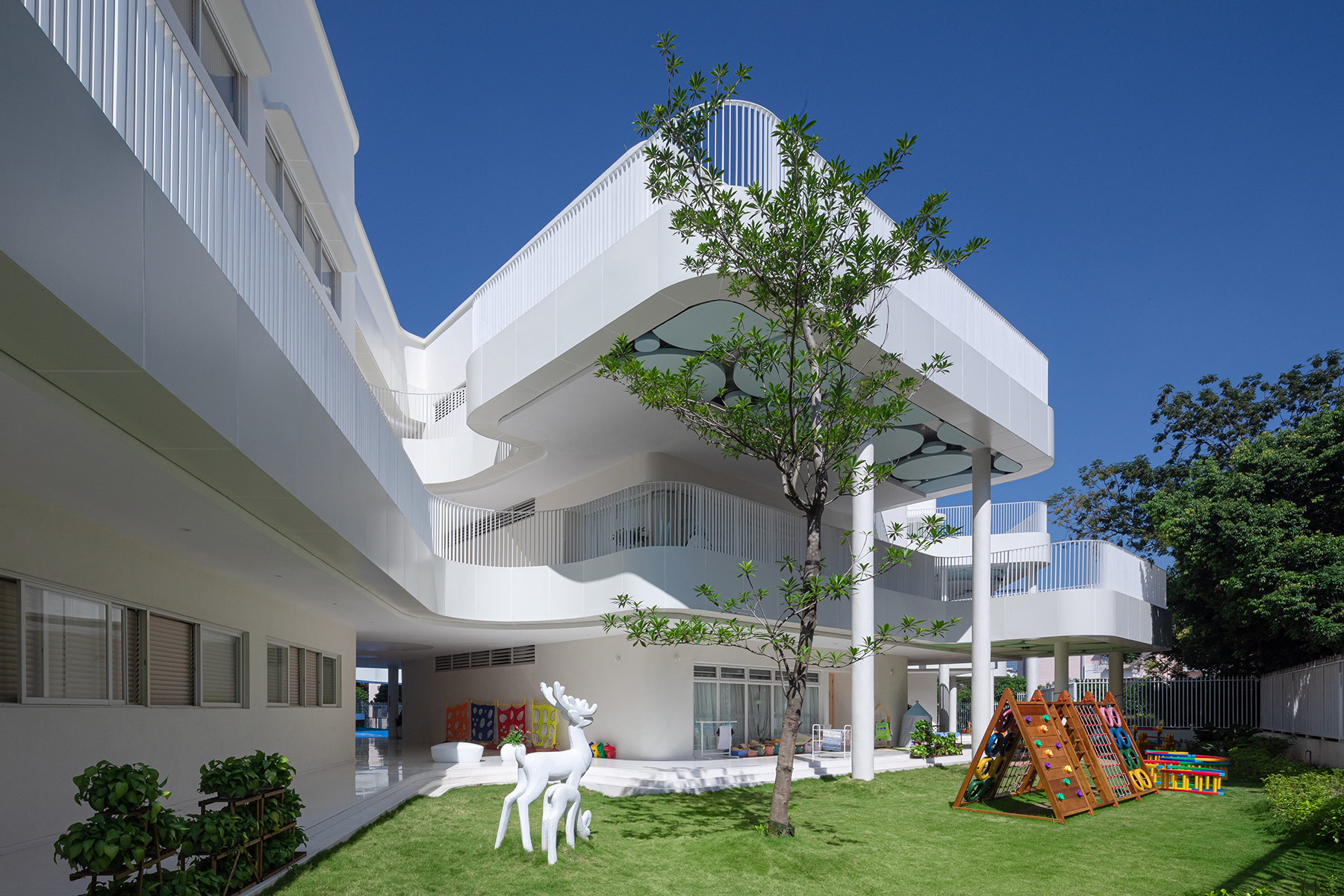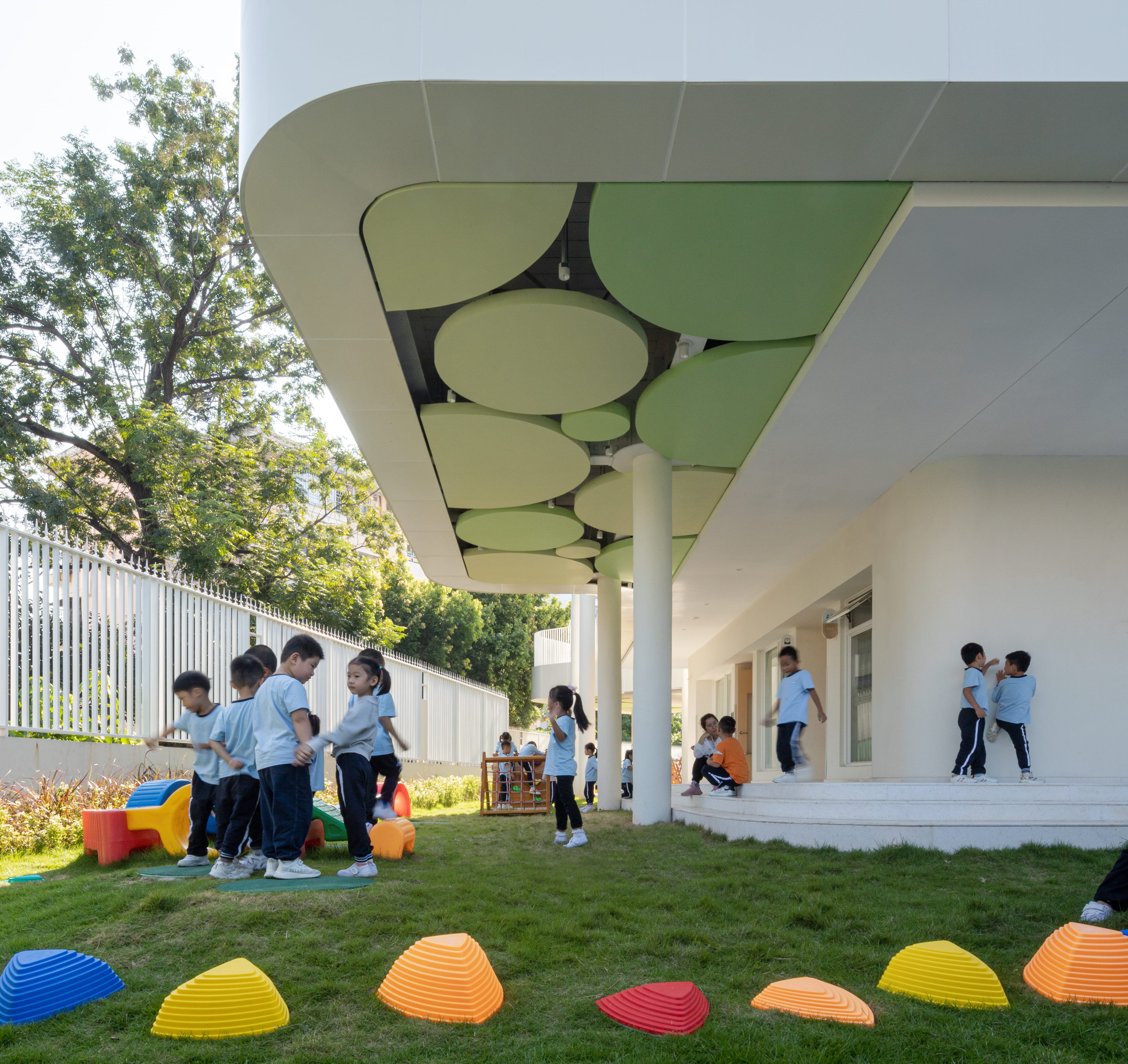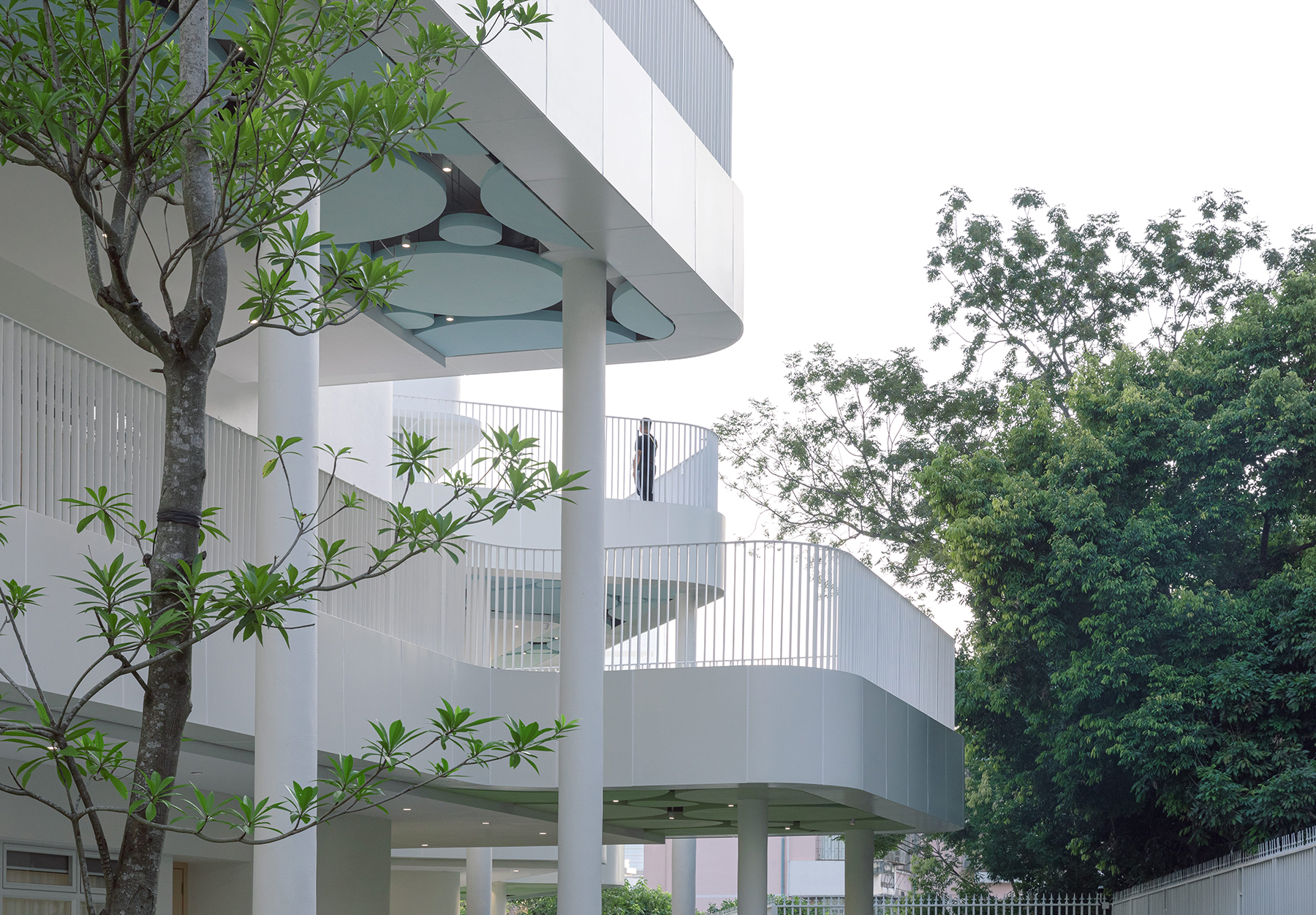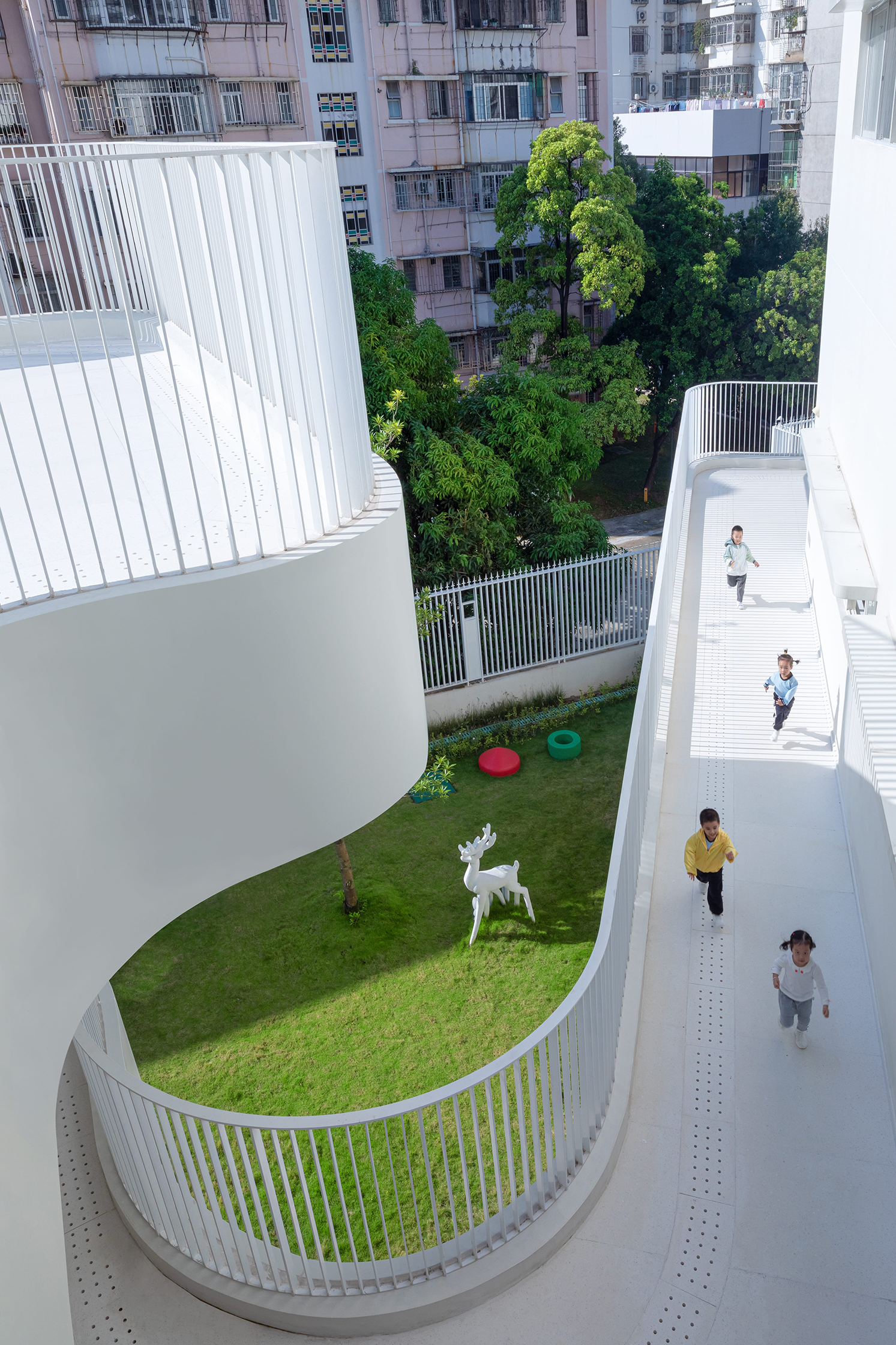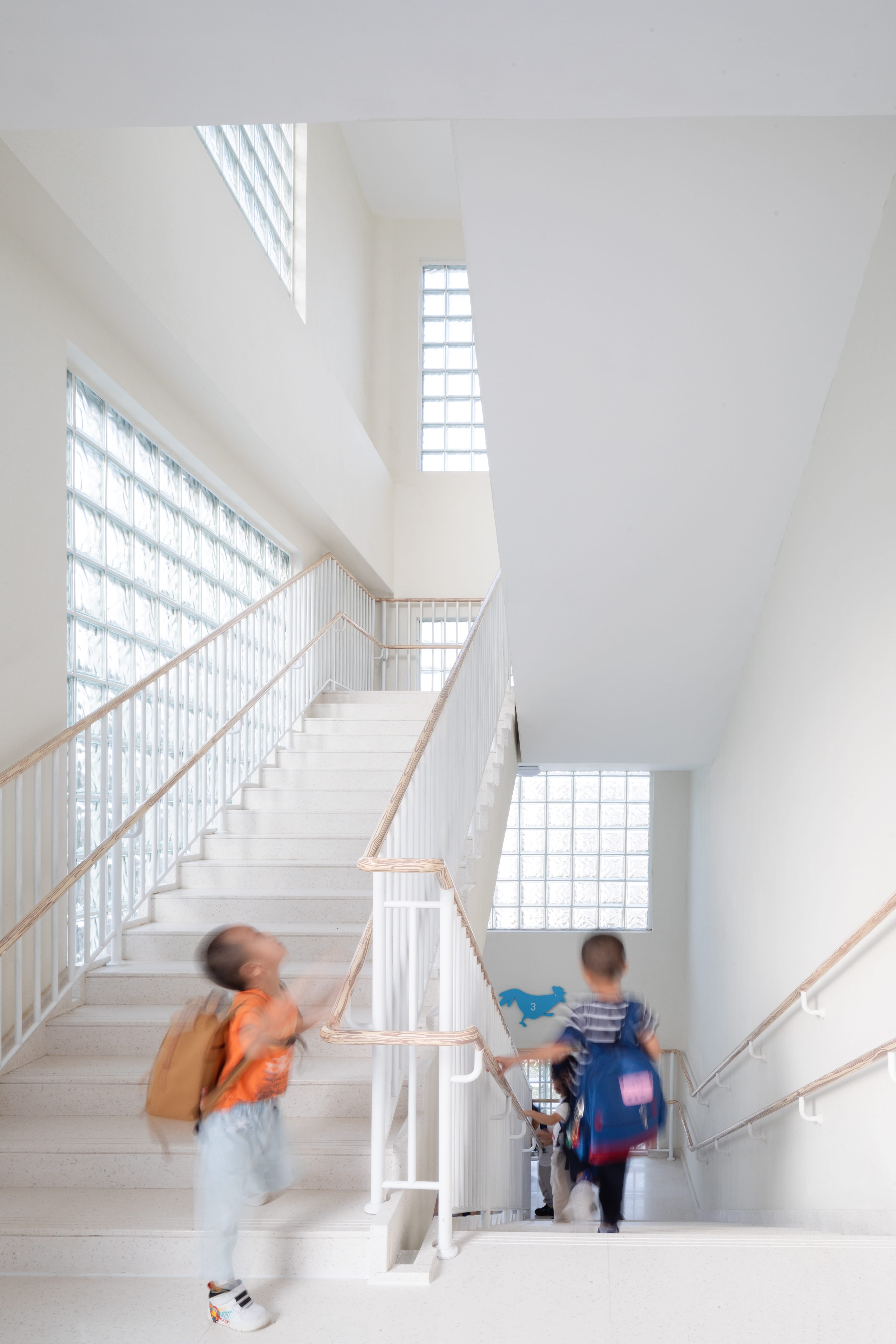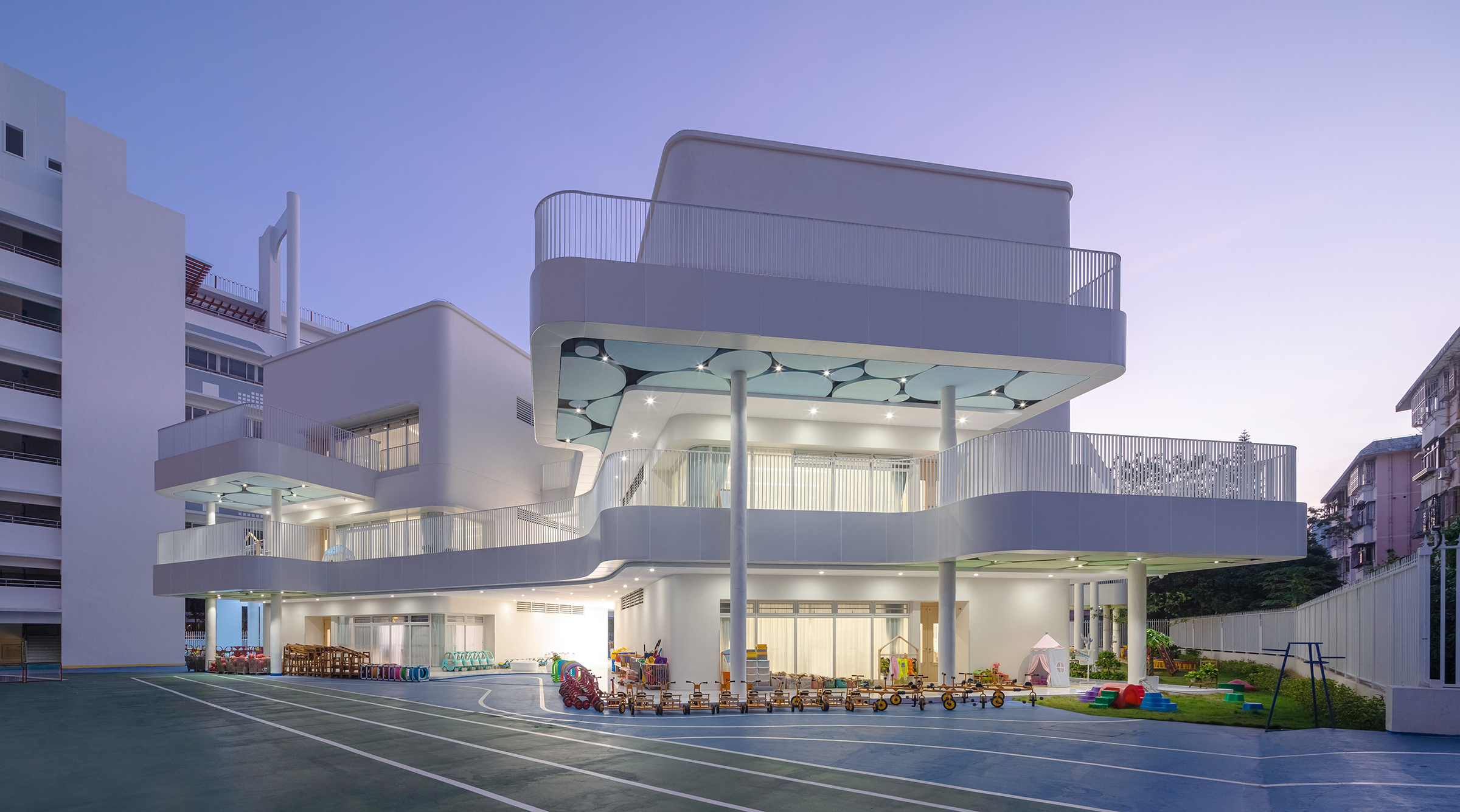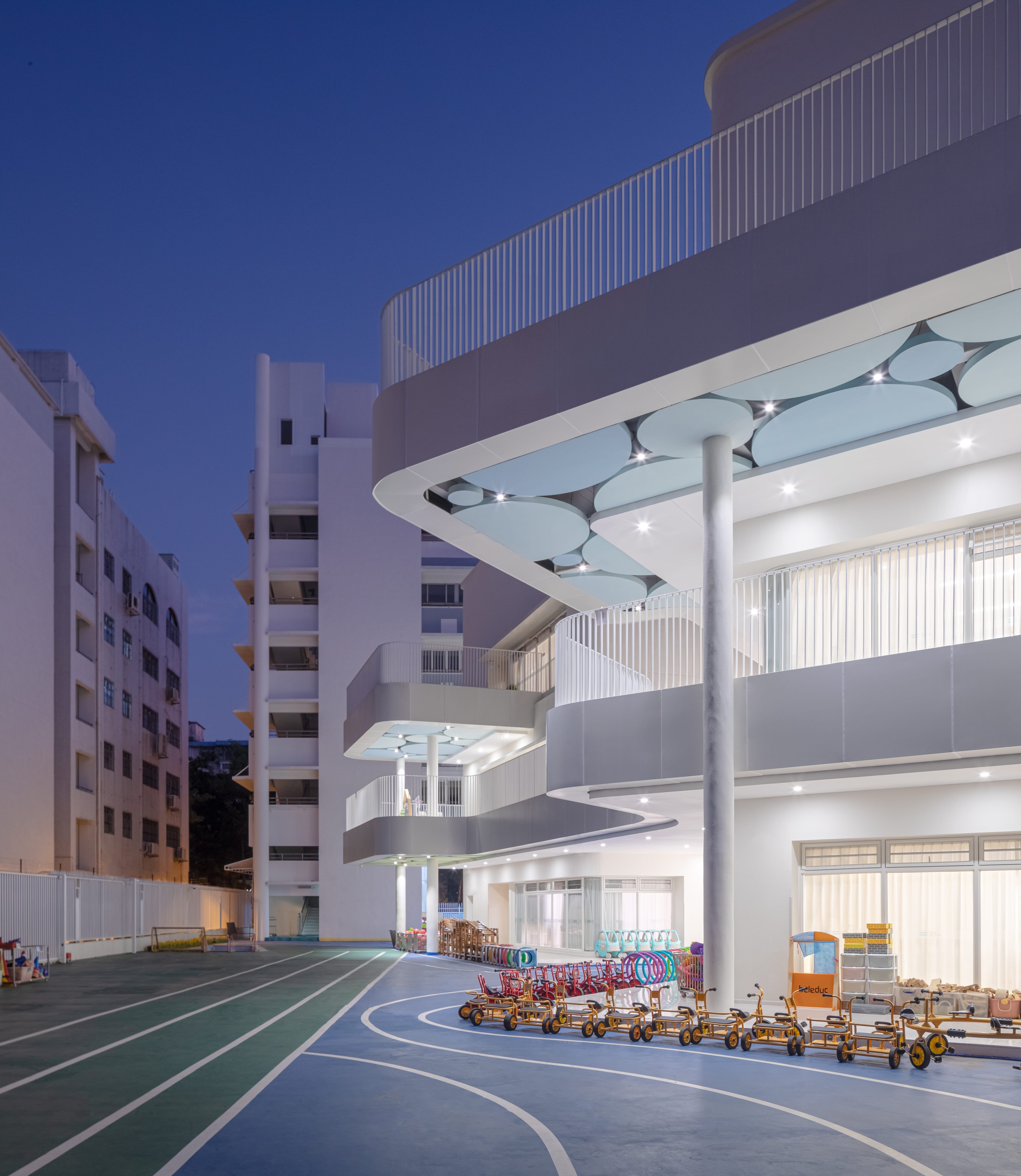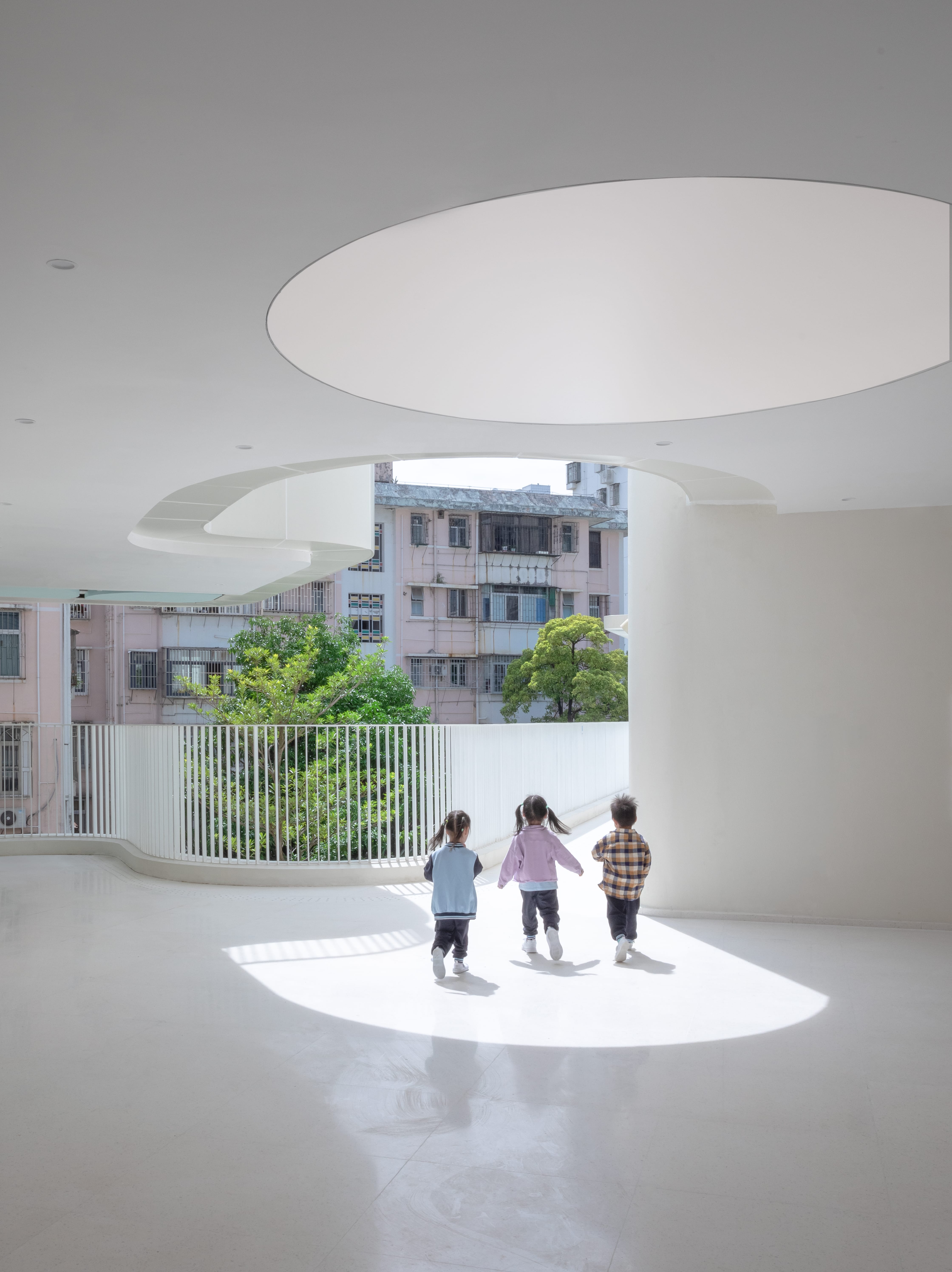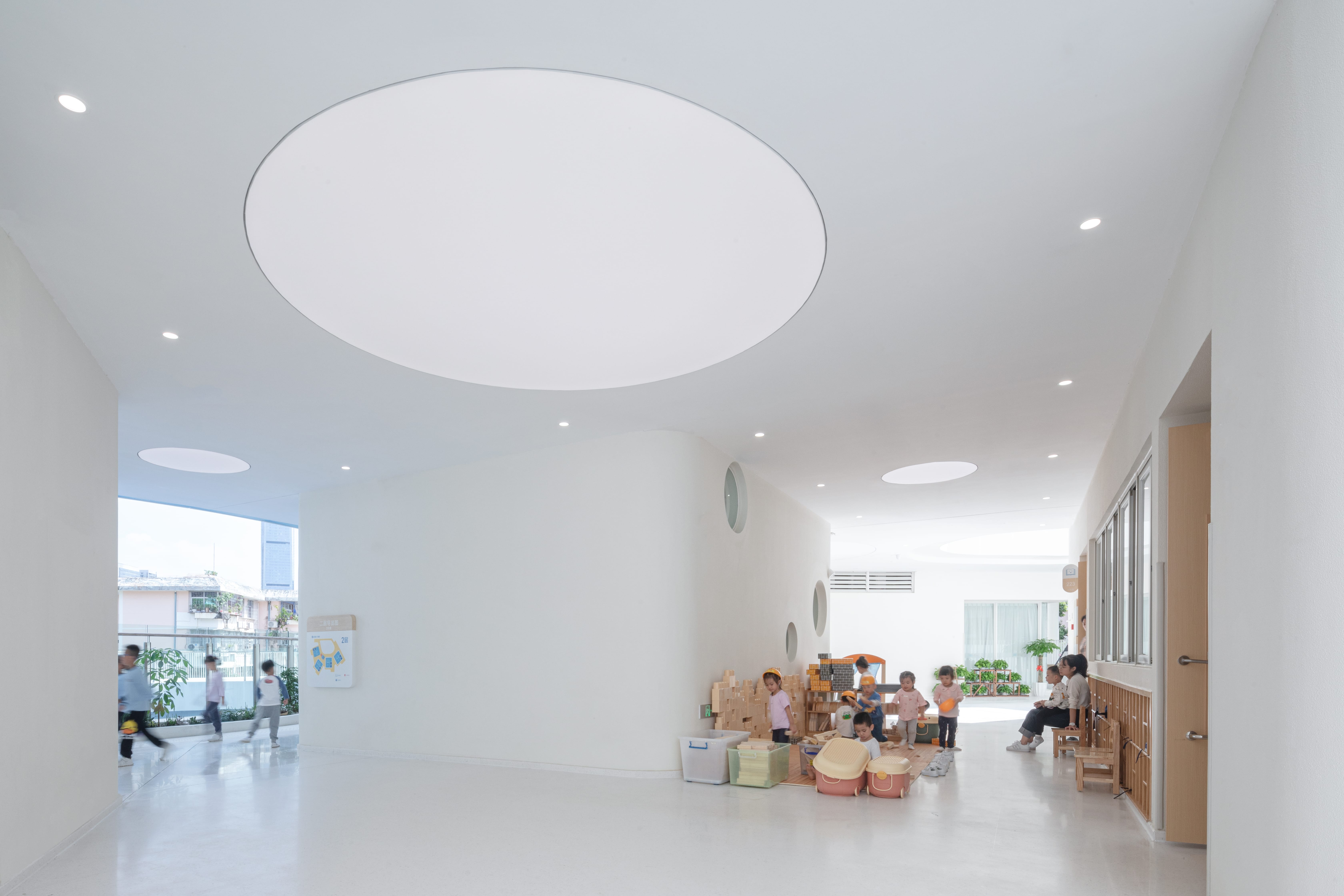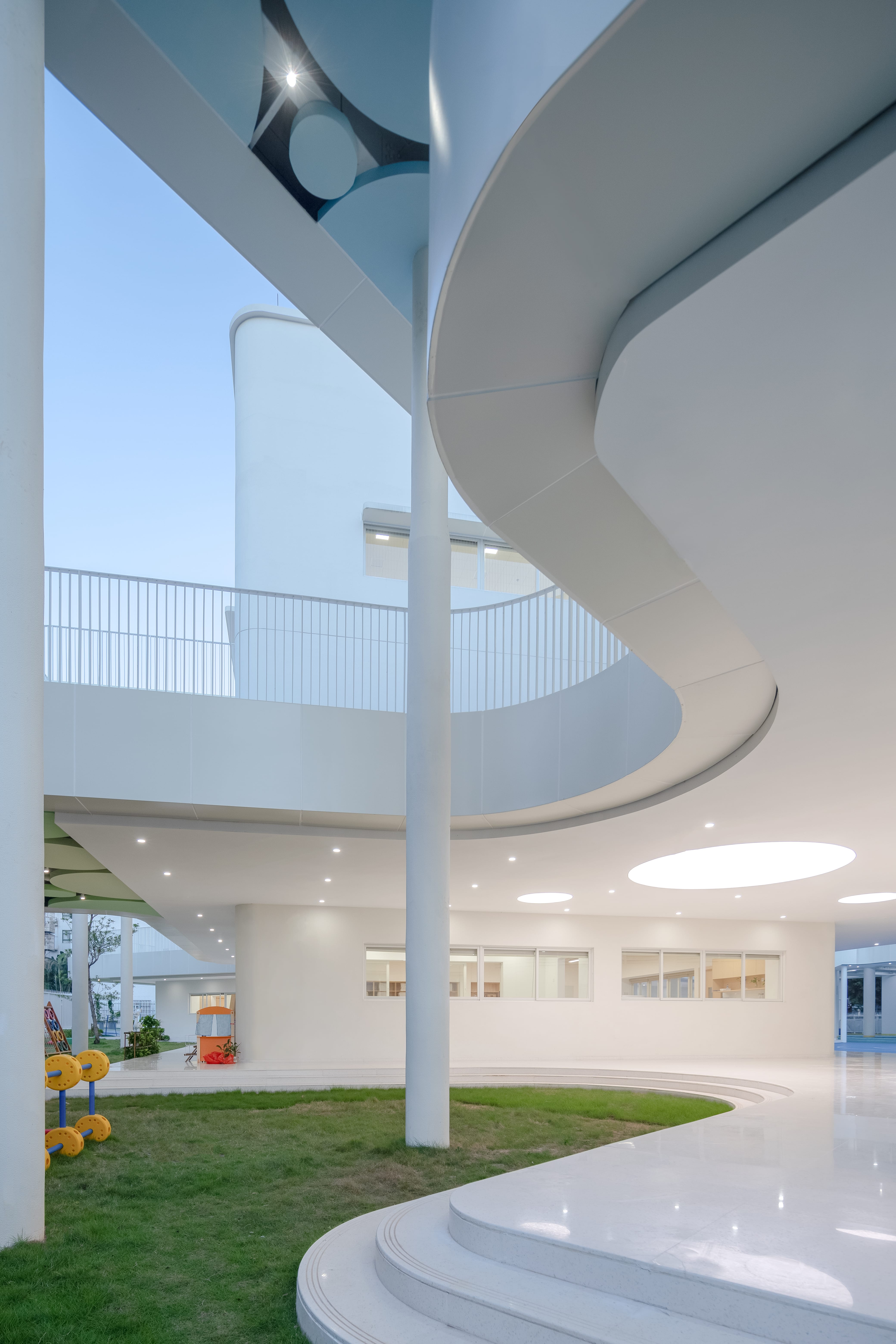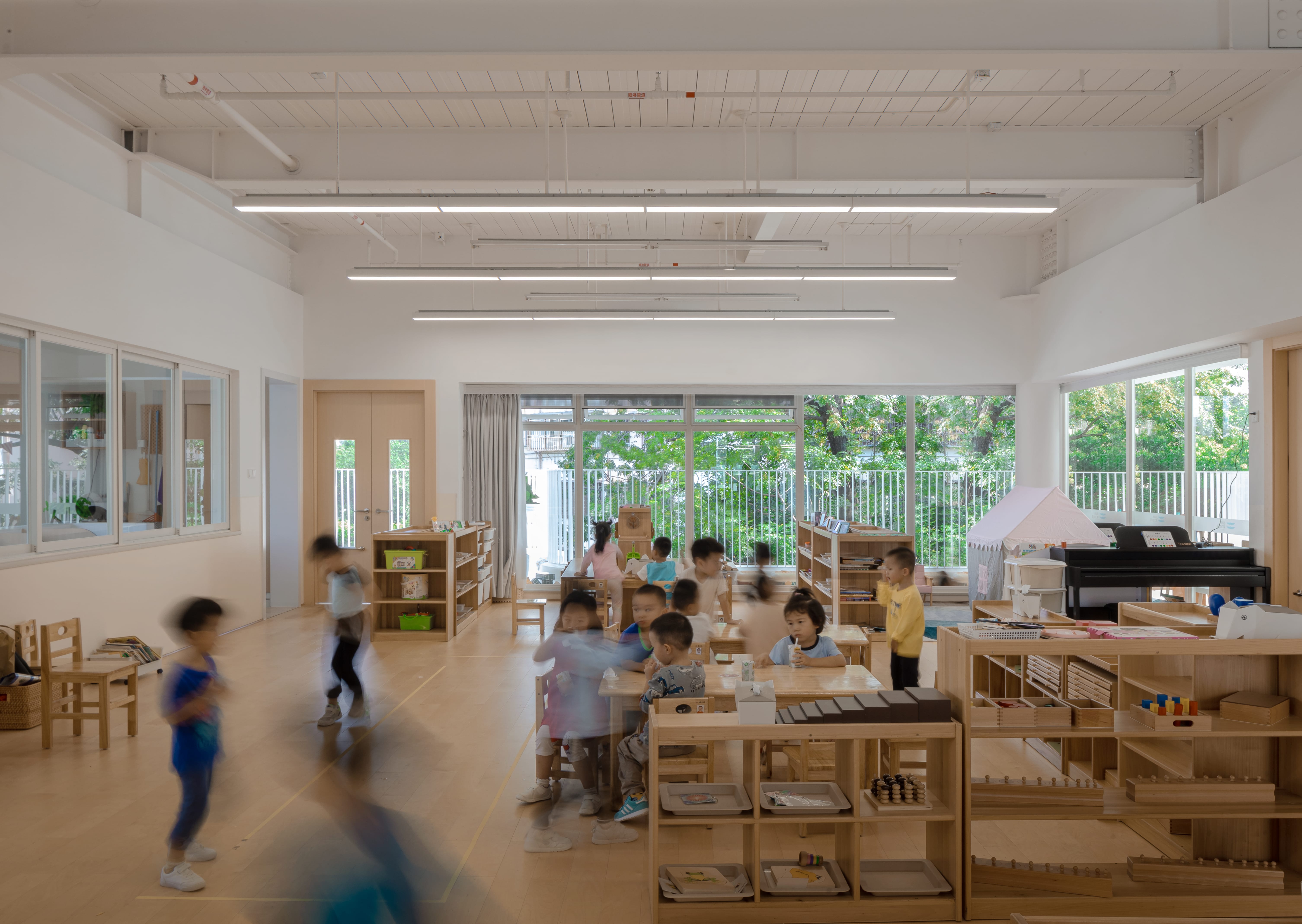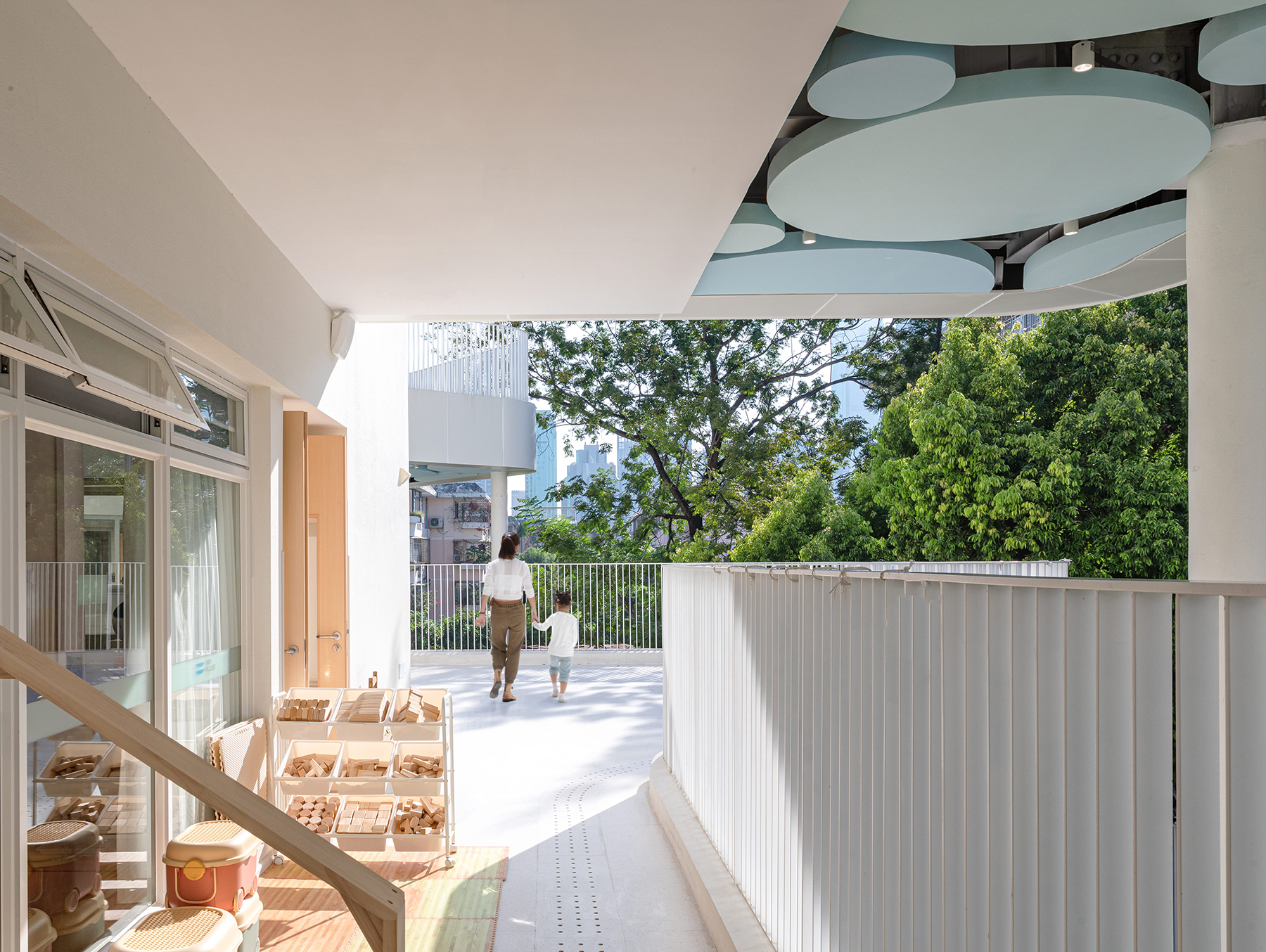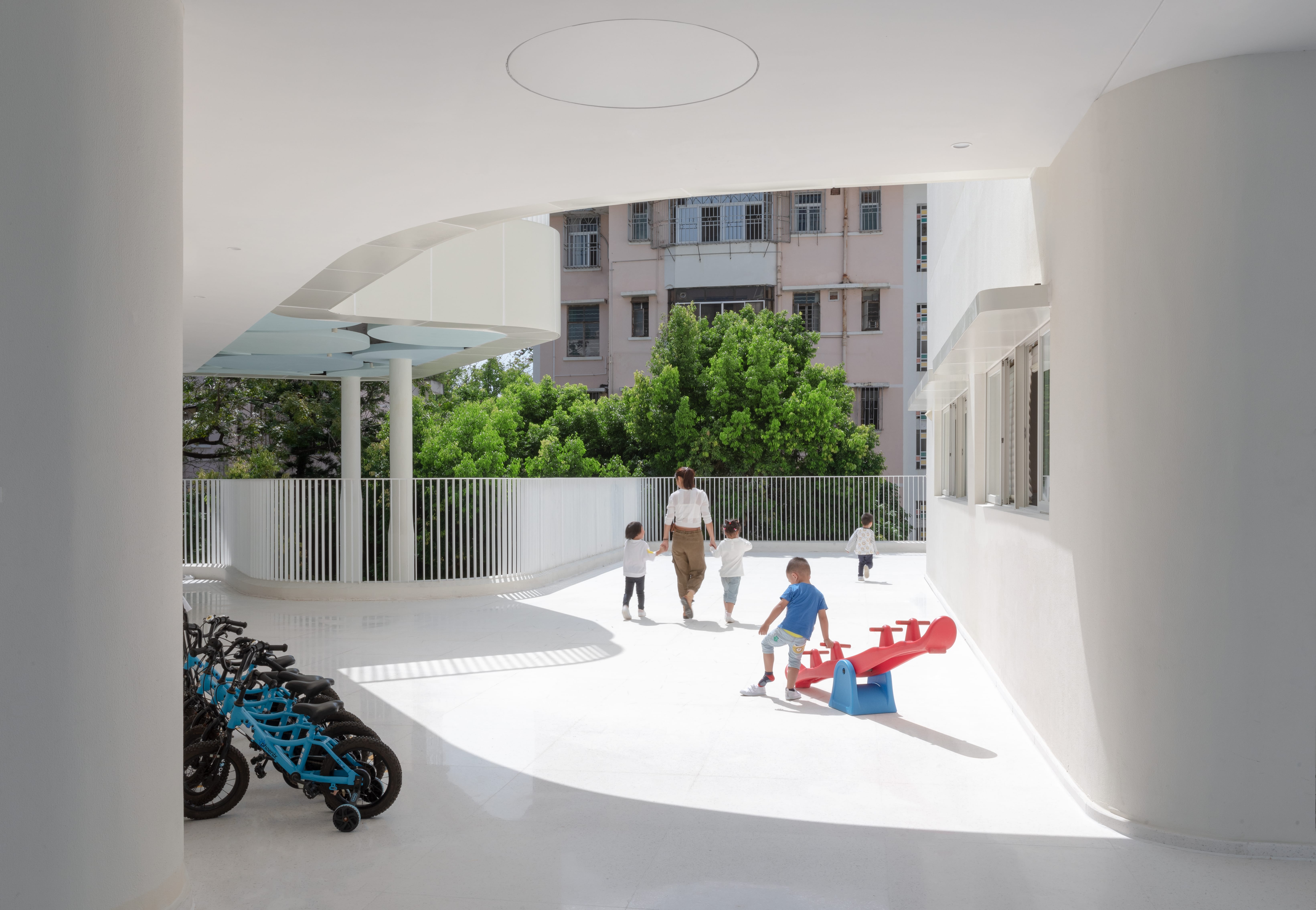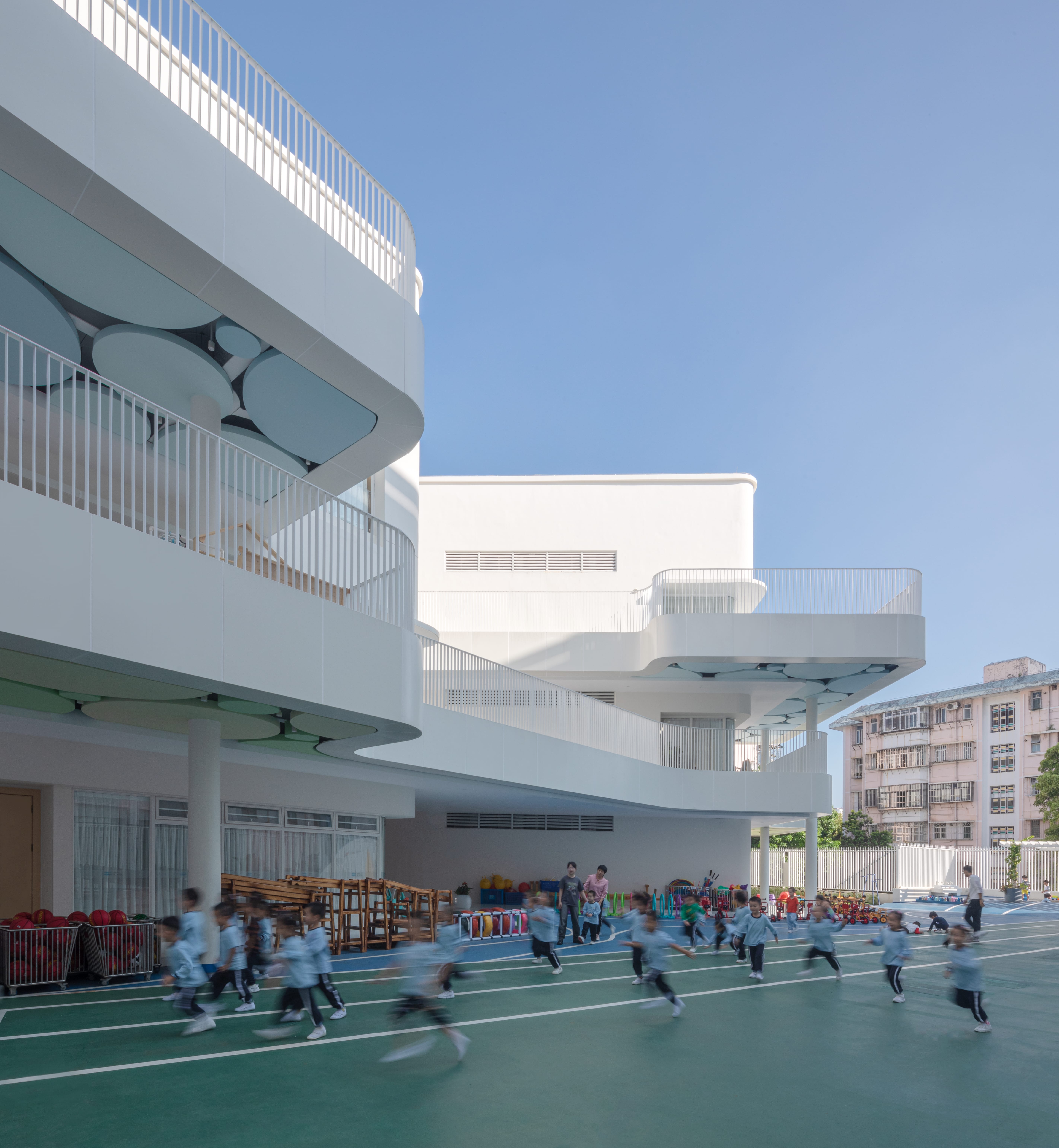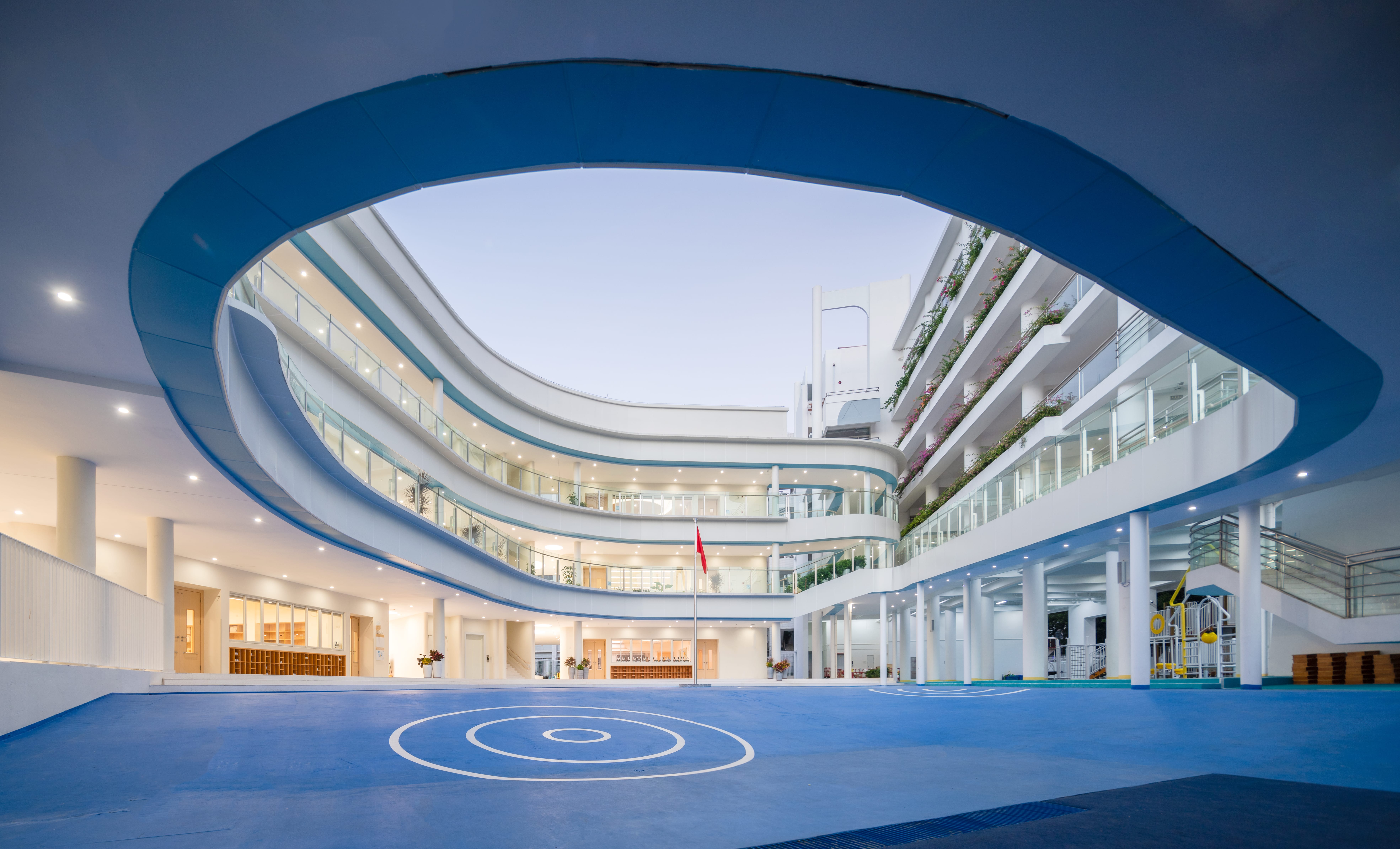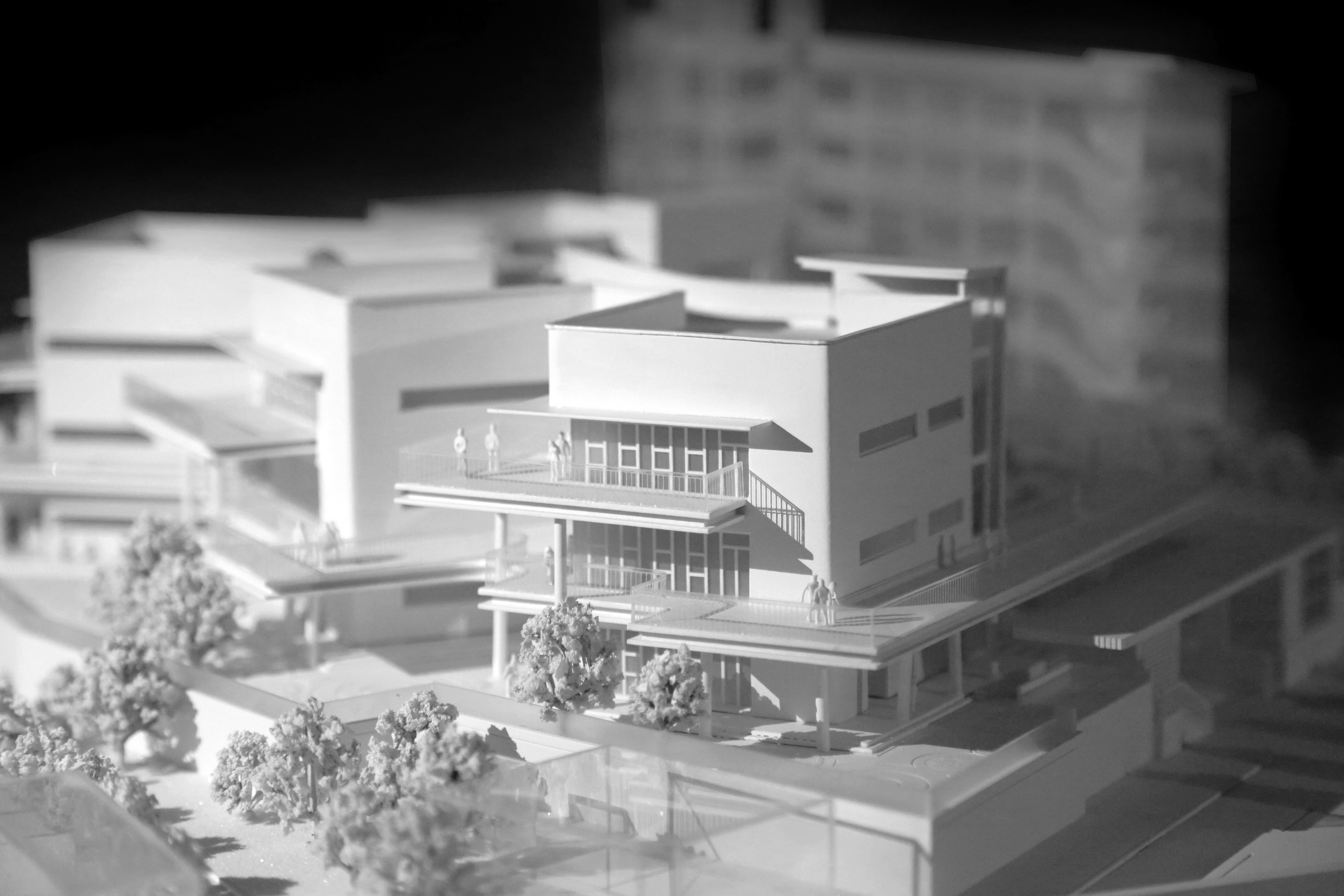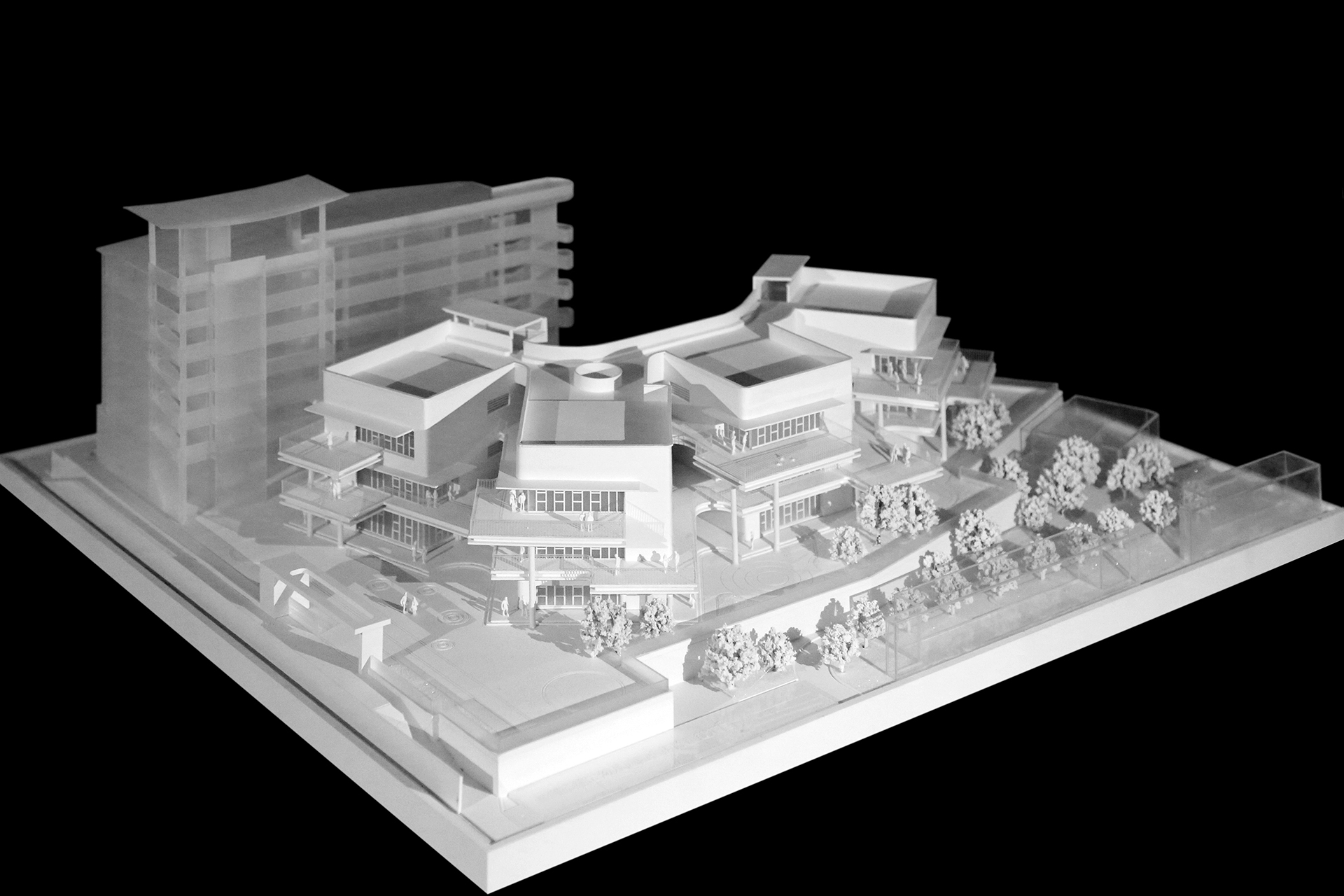This is a kindergarten reconstruction and expansion project, located in the first residential community built in Shenzhen in the 1980s. On the north side of the base is a preserved old building with a very irregular outline on the south side and very close to the housing.
Rather than following the traditional matrix layout, we developed a new geometric relationship between the new building and the site, by organizing a series of axis in different directions. It is the most efficient way for classrooms to avoid the influence from the residentials and the main road. The gaps among the education blocks give the smooth flow to the entire campus. The new together with the old building enclose a large oval courtyard to hold various group events.
Shenzhen is the city with the highest spatial density in China, while the site is located in the center of an old community in the highest density zone in Shenzhen. For children, this place needs a small town more than just a row of classrooms. The architect adopts a natural and organic layout... surrounded by green trees, new blocks rise gently, the flowing space slowly blooms, bringing more cheers and happiness to this old neighborhood.
Each classroom is surrounded by nature. The space without names in-between classrooms may be small or big, narrow or wide, up or down. Combined with a generative curriculum, these different shapes will be redefined and changed by children and teachers in everyday life. More than just a constant playground, the campus is a living community built by everyone in the kindergarten.
Connected by bridges and platforms, are there four cubic units, which are staggered and stacked by three-story standard classrooms. During the day, light and shadow change with the sun. In the evening, the cubes emit mysterious lights, and become a playful maze for kids.
Here you can see the sky, sunlight, white clouds, shadows of trees, birds... it is natural to walk out of the classroom. You can also easily touch nature everywhere, hide and seek, pile sand, build castles, catch fish, pick leaves, set up tents... just like in a forest.
These new blocks are not only classrooms for learning, but also a museum town full of surprise, mystery and adventures. During the day, the sun plays an unpredictable game of light and shadow; in the evening, the glowing boxes become an attractive maze of light.
The layout of the entire building follows the principle of ecological forest-like space, that is, sufficient natural light, smooth ventilation and minimum level of carbon emissions. Whether it is sunny, rainy or humid, the building is guaranteed to be cool and dry in summer, warm and moist in winter.
The layout of the whole group of buildings is to follow the principle of forest space, that is, natural light, smooth ventilation and flow spaces among blocks. Large or small gaps are left between each classroom block to introduce sunlight into the room naturally. With accurate lighting simulation calculations, the specific angles placed in accordance allow each block to provide effective shading for the classroom next to it. These porous spaces are very conducive to the natural ventilation of the building. In the hot summer of Shenzhen, even without air conditioner, the inside of the classroom can still be kept at a normal temperature below 27 degrees.
